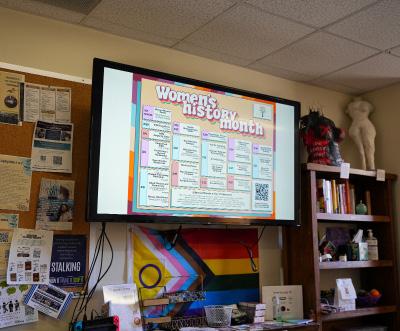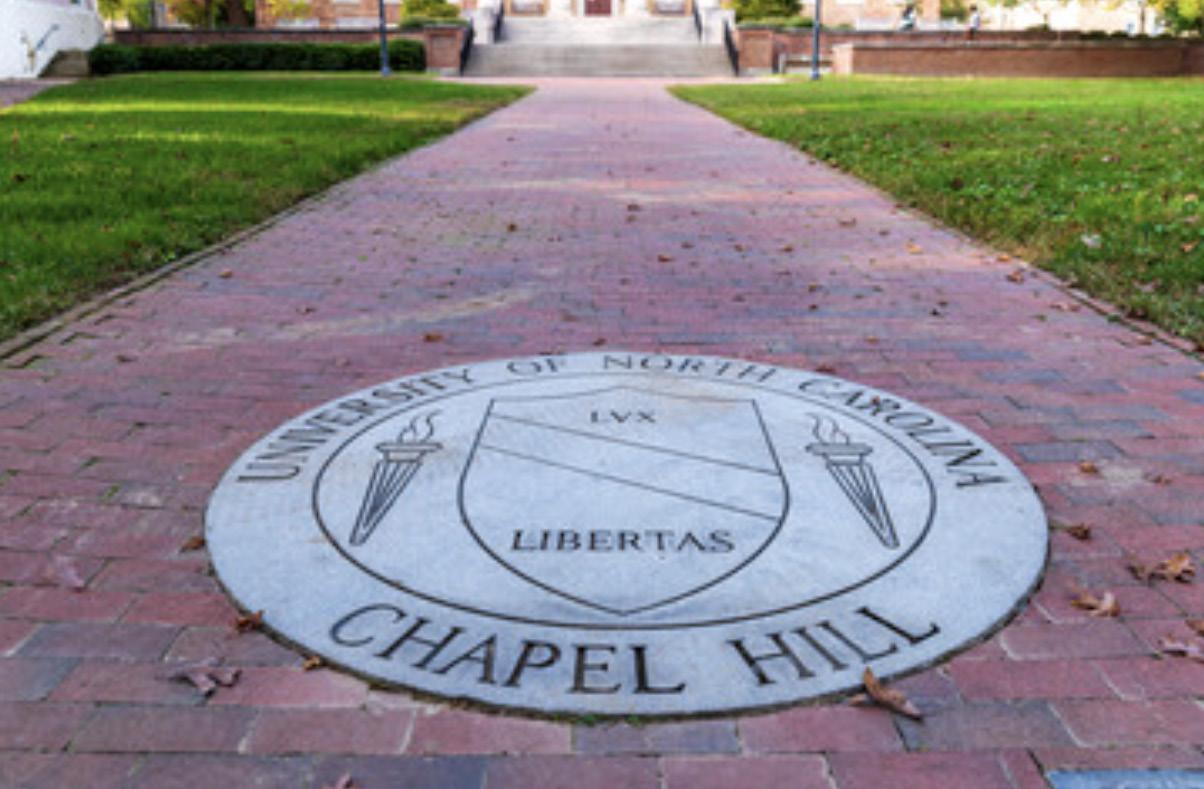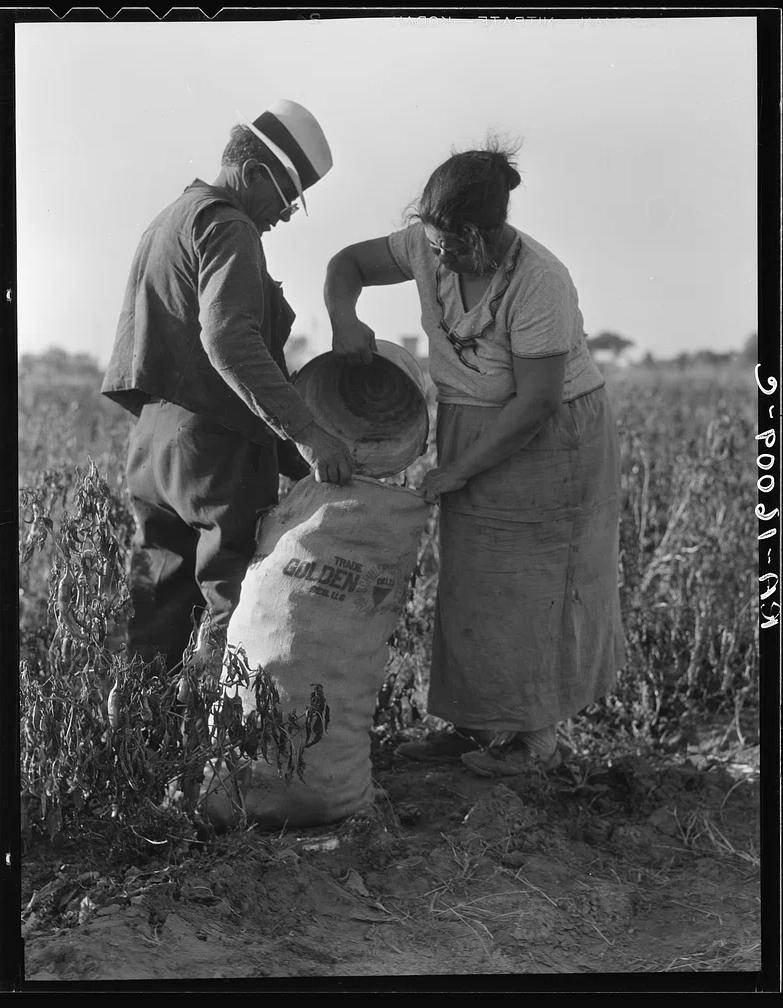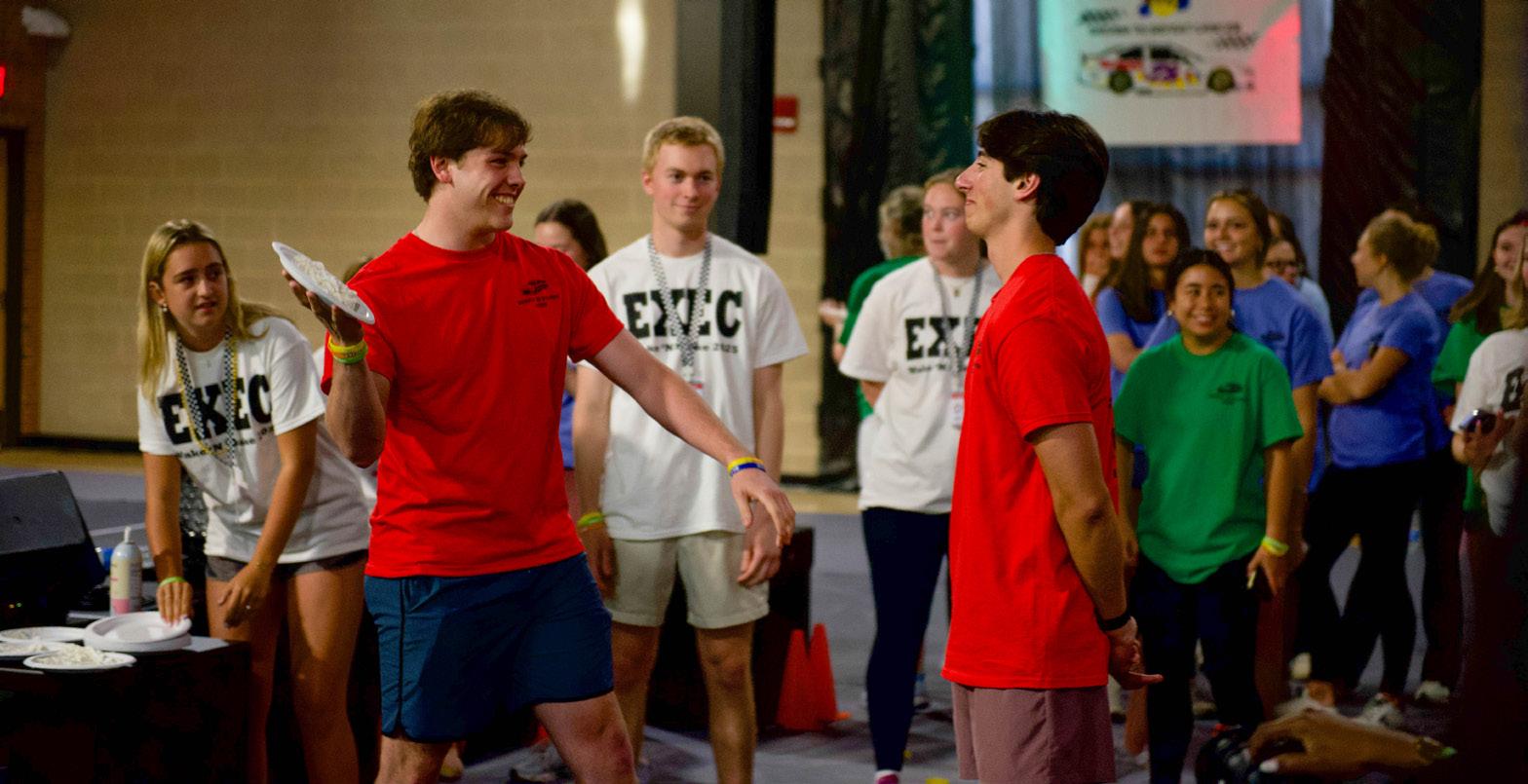Old Gold&Black
“Covers the campus like the magnolia s ”
SINCE 1916

“Covers the campus like the magnolia s ”
SINCE 1916
The letter, “Affirming our institutional commitments,” outlined the values and goals of Wake Forest as an institution of higher education
JILL YODER Staff Writer
On Monday, March 17, Wake Forest President Susan R. Wente, Provost Michele Gillespie and Executive Vice President Jackie Travisano sent out a letter titled “Affirming our institutional commitments.” The message acknowledged political change and its potential impact on higher education, and it reaffirmed the mission and goals of Wake Forest leadership to create an equal and supportive academic community.
President Wente shared a comment via email, detailing the importance of keeping the Wake Forest community informed and assured of the commitments of the institution.
“Recent federal policy changes directly impact Wake Forest’s mission— our teaching, research, and community
partnerships—as well as our commitment to ensuring opportunity for all,” Wente said. “In times of uncertainty, we reaffirm our dedication to transparency, collaboration, and care. We will strive to keep our community informed and take necessary steps to navigate these changes.”
The inauguration of President Trump marked the beginning of a wave of executive orders and legal changes, including those that aim to end diversity, equity and inclusion (DEI) programs.
Direct acknowledgment of DEIrelated programs in higher education came on Feb. 14 in a letter from the Education Department titled “Dear Colleague Letter,” which warned schools that they would lose federal funding if they continued to consider race when making scholarship and hiring decisions.
In recent years, colleges and universities in the United States have been obligated to change long-established practices put in place to ensure diversity and equity in higher education. In June 2023, the Supreme Court ruled against affirmative action in college admissions, limiting public and private universities from using race-conscious admissions policies.
Freshman Sophia Sanders shared her disappointment in these changes and the significant effects on millions of U.S. citizens.
“With alarming speed and efficacy, this [White House] administration has rolled back protections for the most vulnerable in our population and disturbed our sense of normalcy with its complete disregard for civil rights precedence,” Sanders said.
See Letter, Page 3

MIRIAM FABRYCKY Features Editor
From noon to midnight, participants stayed on their feet — sweating, singing and sending countless emails. The teams of students competed to raise awareness and funding for the Brian Piccolo Cancer Research Fund. On Saturday, March 22, students gathered in the Sutton Wellbeing Center for Wake Forest’s 20th annual “Wake ‘N Shake” dance marathon. By the end of the night, they had raised a total of $322,975.
Junior Grayson Weavil, a member of the corporate sponsorship executive team, expressed her excitement and pride for the success of this year’s fundraising event.
“The outcomes of the event absolutely exceeded our expectations,” Weavil said. “We raised over 130K in a single day. This was double last year’s amount and we were all absolutely speechless.”
The Piccolo Fund promotes research into improved treatments against cancer at Atrium Health Wake Forest Baptist and several other medical institutions in memory of Brian Piccolo. Piccolo, a Wake Forest alumnus and legendary football player, died of embryonal cell carcinoma at age 26 in 1970.
Ten years later, Wake Forest students founded the Brian Piccolo Cancer Research Fund and, in decades since, have continued to honor Piccolo’s legacy through several philanthropic avenues, including Wake ‘N Shake. Since its inception in 2006, the energetic fundraiser has been organized entirely by students and has grown into one of the most beloved campus events.
Wake ‘N Shake has historically relied on the fundraising efforts of student organizations. Excluding the Wake ‘N Shake Executive Board, the teams that raised the most funds include the Bayer-Nops team and Delta Zeta sorority, each collecting close to $38,000. Some individual students also raised several thousand dollars.
See Wake & Shake, Page 3
This column represents the views of the deputy editor of the Old Gold & Black, Skyler Villamar-Jones
There is a lot of news. Our phones ping constantly to notify us of new articles. Beyond Washington, stories can be found in every corner of the world. All of these stories have an impact, and all of them deserve the opportunity to be shared. This quick news cycle is admirable.
Even Wake Forest has a constant stream of news — there are endless events, organizations, announcements, people and more that deserve to have their stories told. There is even more news beyond the edge of campus — our City & State section, which began last fall, expanded our
coverage to the Winston-Salem community and North Carolina. And yet there are always stories left untold.
The Old Gold & Black’s motto, ‘Cover the campus like the Magnolias,’ embodies our commitment to produce timely and quality news. We are proud of our coverage. But we acknowledge as student journalists that we are all still learning and that our coverage is imperfect.
Don’t get me wrong — timely news is vital. The public deserves to be informed about what happens in the world, and passionate reporters deserve the opportunity to pursue inter-
esting stories. In an idyllic world, journalists would cover any and all stories they wish. Realistically, though, the finite resources most newspapers have makes this impossible.
The Old Gold & Black is fortunate to receive University funding. We are also lucky to have a large staff of editors,photographers/videographers, designers, and, of course, writers. We have seven sections of our paper that encompass the major aspects of campus news. This is a privilege not many small papers have. And yet, we can only do so much.
Yes, this is frustrating, but our stu-
THE STUDENT NEWSPAPER OF WAKE FOREST UNIVERSITY SINCE 1916
ELLA KLEIN EDITOR-IN-CHIEF kleiek22@wfu.edu
ANDREW BRAUN MANAGING EDITOR brauar23@wfu.edu
>> NEWS
Maria Silveira, silvmt23@wfu.edu
Caroline Khalaf, khalca23@wfu.edu
>> CITY & STATE
Nick Costantino, costnp24@wfu.edu
>> FEATURES
Alexandra Meier, meieam22@wfu.edu
Miriam Fabrycky, fabrml24@wfu.edu
>> ENVIRONMENT
Mia Springer, spriml21@wfu.edu
Beza Zelalem, zelam22@wfu.edu
Asst. Editor
Reese Lile, lilerl24@wfu.edu
>> OPINION
Mattie Stillerman, stilmk23@wfu.edu
Asst. editor
Towne Moores, moortv24@wfu.edu
>> SPORTS
Sean Kennedy, kennsm21@wfu.edu
Asst. editor
Blake Robinson, robiba24@wfu.edu
SKYLER VILLAMAR-JONES DEPUTY EDITOR villsc22@wfu.edu
>> PHOTO
Piper Saunders, saunpg23@wfu.edu
>> VIDEO
Jack Perez, perejw22@wfu.edu
>> SOCIAL MEDIA
Sophie Chan, chansr23@wfu.edu
>> COPY CHIEF
Alex Keating, keatam23@wfu.edu
>> WEBMASTER
Audrey Howley, howlam23@wfu.edu
>> DESIGN CHIEF
Oliver Hale, haleop21@wfu.edu
>> ADVERTISING DIRECTOR
Jordan Rill, rillje22@wfu.edu
>> ADVISER
Phoebe Zerwick, zerwicp@wfu.edu
Want to write for us? Email wfuogb@gmail.com
dent newspaper is staffed by just that: students. We all must balance our academics and extracurriculars, and sometimes, academics take priority. As full-time students, we do not have the time to pursue every single story idea we have. While our staff is expansive, our editors often write stories in addition to their other time-consuming responsibilities.
There is also a learning curve for new writers, and timely stories may take time to be written and developed to our standards. We prioritize being able to mentor new journalists over rushing coverage.
WILL KUNISAKI MULTIMEDIA DIRECTOR kuniwx23@wfu.edu
>> POLICIES
RYDER SOLBERG BUSINESS MANAGER solbrs23@wfu.edu
Our job as a newspaper is to be a platform for all voices, not just the ones we agree with. However, we reserve the right to reject advertisements that are vulgar, inaccurate, obscene or violate Wake Forest’s policies on nondiscrimination, diversity, equity, and inclusion as they pertain to student organizations. We will also reject any advertisements that promote illegal activities according to the state of North Carolina.
Not only do we hold our newspaper and its contents to a high standard, but we also expect that those who choose to use us as an outlet for their ideas, opinions and skill hold themselves and their content to a high ethical standard.
The Old Gold & Black is published Thursdays during the school year, except during examinations, summer and holiday periods, by Triangle Web Printing of Durham. The views expressed in all opinion pieces and advertisements contained within this publication do not necessarily reflect the opinions of the Old Gold & Black. As part of our commitment to reporting news fairly and accurately, we will not remove any previously published content online unless it is retracted. If an error in either our online or print content is brought to our attention, we will revise the originally published article with an appended correction. In order to facilitate thoughtful and appropriate debate, profane, vulgar, or inflammatory comments on our website are not allowed and will be deleted. Comments which incite violence, target individuals in a form of cyber bullying, or which promote ideas which vilify marginalized communities will be deleted, and proper authorities may be notified and involved.
>> SUBMISSIONS
The OGB welcomes submissions in the form of story tips, columns and letters to the editor. Letters to the editor should be fewer than 350 words, and columns should be around 500 words. Send yours via e-mail to kleiek22@wfu.edu the Monday before publication. We reserve the right to edit all letters for length and clarity. No anonymous letters will be printed.
>> ONLINE MEDIA
Website: wfuogb.com
Facebook: facebook.com/ogb1916
X (Twitter): @wfuogb
Instagram: @wfuogb
TikTok: @wfuogb
Sports X (Twitter): @wfuogbsports
Continued from Page 1
Although it did not name them directly, the letter recognized the sweeping impact of these changes on members of the Wake Forest community and beyond.
“During the past two months, many Wake Forest students, staff, faculty and alumni, along with members of our neighboring communities and thousands of people across the U.S., have experienced lifechanging interruptions,” the letter stated.
While future executive orders remain in question, the administration believes further effects on higher education could arise. They shared, in the message, their commitment to understanding and responding to changes in alignment with Wake Forest values.
“We cannot predict the long-range impacts on higher education,” the letter stated. “But we can expect additional executive orders, guidance from federal agencies, and other changes at the federal and state levels. During this period of uncertainty, it is important to affirm our shared Wake Forest commitments.”
The letter continued by listing the commitments Wake Forest continues to make, including supporting all students in their academic and professional journeys, advancing our collective understanding of academic freedom and supporting alumni impacted by federal changes.
Sanders shared her hope that these commitments made by Wake Forest administration will prove true, not only in word, but in action.
“While undeniably vague in its reference to ‘changes coming from the new administration,’ the letter is certainly effective insofar as it reassures students of its commitment to inclusivity and support for all,”
Sanders said. “My hope is that these are not empty words but a sincere promise to actively uphold the values of Pro Humanitate on Wake Forest’s campus that are being so egregiously neglected at a governmental level.”
The letter also shared that Wake Forest recently established a cross-functional government affairs steering committee. Guided
by legal counsel, it will provide recommendations and help coordinate university responses if more federal-level changes occur. The administration has also been working with those beyond the Wake Forest community to understand the implications.
“Since January, Wake Forest leadership has actively and continuously engaged our elected officials, peer institutions, and associations to anticipate, understand and respond to federal actions,” the letter said.
The letter ended by assuring that support is available to all members of the Wake Forest community.
“Our most important priority in these times of uncertainty is our people,” it read. “We care about your academic and professional success and your personal well being. Please let us know how we can support you.”
Associate Vice President for Campus Life and Dean of Students Matt Clifford shared his hopes for how the Wake Forest community will engage with each other in this time of change and uncertainty.
“I encourage the Wake Forest community to lean into generous and empathic
Continued from Page 1
Freshman Annabelle Grenzer stayed the entire event with the Alpha Delta Pi sorority team. While she was excited to try out the various activities and amenities at the event, Grenzer most appreciated the heartwarming community spirit at Wake ‘N Shake.
“You see how much Wake Forest students really care about getting together and participating in these fun things that go toward good causes,” Grenzer said. “It shows that a lot of kids are good-natured and good-spirited. They put together fun events that we care about and everyone enjoys.”
This year’s Wake ‘N Shake theme was titled “Fuel the Fight for a Cure.” The Sutton Center was filled with race-carinspired decorations, such as checkered pennants, mock roads on the floor, and signs that read “drive out cancer” and “rev up for a cure.” At the back of the gym, students wrote the names of their loved ones who have been affected by cancer on colorful paint sample chips and attached the names to a wall labelled “Who are you dancing for?”
Freshman Juliet Sanchez arrived at
curiosity,” Clifford said. “Engaging in dialogue with others, listening for understanding, and withholding judgment allows us to connect with each other. Pro Humanitate — being for humanity — requires caring for the people in your community. We know how to do that and I encourage everyone in this season to look out for each other and ask for help if you or someone you know needs it.”
With proposed changes to FAFSA that will eliminate race/ethnicity reporting on the application form, Wake Forest may need to rethink its financial aid policies and outreach efforts to maintain support for diverse student populations. However, it remains unclear how, if at all, the university will adjust.
In future months, further changes to higher education can be anticipated, and the Wake Forest Office of Government Affairs has created a website to provide updates on issues that may impact the university.
Contact Jill Yoder at yodejs24@wfu.edu
$323,000
6:00 pm with the Delta Delta Delta sorority team. She was motivated to dance because several of her grandparents and family friends have dealt with cancer. Sanchez was encouraged by the number of students who showed up to support the cause.
“It’s very lively with a lot of people, which is nice to see,” Sanchez said. “It’s one of the few events that all of the Wake Forest community gathers for.”
Students enjoyed dances led by the morale team, “Just Dance” videos projected on the big screen and live performances from bands – The Barons, July Turner and Chicken Scratch – as well as from campus a cappella groups – Demon Divas and MeloDeacs. Wake N’ Shake champions Junius Nottingham, Marybeth Hays, Stacey Panchyshyn, Jordan Kosoy and Henry Fenollosa also shared their personal experiences with cancer.
The level of enthusiasm in the gym reached a new peak as Chicken Scratch came to the stage, and Sanchez laughed as a wave of sound swept across the room.
“Very high energy and high intensity. Staying hydrated and taking breaks to keep the energy up is important,” Sanchez said.

Wake ‘N Shake attendees participated in a game of Just Dance, one of the many activities during the dance marathon.
The Wake ‘N Shake Executive Team hopes that this event will continue to grow every year.
“Most of all, I hope that Wake ’N Shake becomes an even more prominent symbol of Wake Forest’s commitment to Pro Hu-
manitiate,” Weavil said. “I hope that we can continue to put Brian Piccolo and his legacy at the forefront of the event and ensure people know his story.”
Contact Miriam Fabrycky at fabrml24@wfu.edu
• An unknown person took an individual’s items from a room in Magnolia Hall. The individual was unable to advise when the items were taken. This report was filed at 11:22 a.m. on Mar. 17.
• An unknown person(s) took an individual’s purse they left outside the bathroom stall in the 2nd floor B wing female bathroom near Poteat lounge and took their Deacon OneCard which was laying on top of their purse. This report was filed at 12:47 p.m. on Mar. 18.
• An individual took someone’s Deacon OneCard near Davis Hall and spent $20 in Deacon Dollars. This report was filed at 11:11 a.m. on Mar. 19.
• An individual reported being bothered and stalked by their ex-boyfriend near Deacon Place Apartments. This report was filed at 7 p.m. on Mar. 19.
• The Winston Salem Police Department was dispatched to an individual entering through an unlocked back door near Long Drive Nothing was taken from the residence. The individual rummaged through the food pantry and shattered the front glass of the oven with a wine glass. WSCSI processed the scene, neighborhood canvassed for video footage and witnesses with negative results. This report was filed at 11:03 p.m. on Mar. 20.
• An unknown individual took someone’s headphones from Wingate Hall after being left there. This report was filed at 11:05 p.m. on Mar. 20.
• The Winston Salem Police Department requested a unit to help clear a party near University Parkway and Long Drive No citations were issued. This report was filed at 1:05 a.m. on Mar. 22.
• Underage individuals consumed alcohol at a social event on campus near the Sutton Center. This report was filed at 2:05 p.m. on Mar. 22.
JILL YODER Staff Writer
Saturday, March 1 marked the beginning of Women’s History Month 2025. The Wake Forest Women’s Center, in collaboration with campus partners and student organizations, hosts events throughout the month to educate and uplift female students across campus.
“These events give our campus community an opportunity to engage with and reflect on women’s history, as well as an opportunity to celebrate that history together,” said Director of the Women’s Center Shell Sizemore. “The focus of our programming is on increasing awareness and understanding across our campus all the time.”
This year, Women’s History Month is nationally themed “Moving Forward Together! Women Educating and Inspiring Generations.” The theme honors and celebrates all the women who have committed their lives to education, mentorship and leadership and have built bridges for generations of women to come.
Sophomore Aria Baken said she felt empowered when hearing from mentors who had the courage to create their own paths.
“It is important for any college campus to uplift and highlight the contributions of women because it promotes a culture of equality and recognition,”
Baken said. “Acknowledging their achievements motivates students to challenge societal norms and fosters a sense of empowerment that can hopefully inspire future generations.”
The Women’s Center works to support and build community among the women of Wake Forest through programming and initiatives. Led by Sizemore and Assistant Director Hannah Rehm, the center aims to educate, create belonging, support growth and celebrate the work and history of women during Women’s History Month and beyond. Sizemore emphasized the importance of recognizing as many of the unique experiences of womanhood as possible.
“We know that women’s contributions throughout history have often been overlooked or minimized,” Sizemore said. “March is an opportunity to highlight the ways that women have contributed to our world and to celebrate those accomplishments. In the Women’s Center, it is particularly important to us not to fixate on one narration of women’s history, but instead to bring in as many understandings and experiences of that history as possible.”
Leading up to March, the Women’s Center collaborated with over 20 campus partners to create a calendar of events focusing on gender equity. This is the first year that every event on the Women’s History Month calendar is co-sponsored by the Women’s Center and another administrative department, academic department or student organization. In addition, a planning committee of staff and students was created

to review proposed programs and provide feedback.
Senior Grace Ayzanoa serves as a Wellbeing Ambassador for the Office of Wellbeing and believes in the importance of these events in creating a culture of shared knowledge and support across campus.

“Women have played pivotal roles in various professional fields and actively showcasing their voices helps ensure inspiration for future generations within these fields,” Ayzanoa said. “[The Reproductive Health and the Law] event specifically was important because it was a collaborative effort between multiple offices, including the Women’s Center, SHAG and The Office of Wellbeing, which demonstrates many of the support systems on campus.”
In the first half of the month, the Women’s Center has partnered with organizations including the Student Union, the Intercultural Center and the Department for Women, Gender &
Sexuality Studies. The events kicked off on Feb. 28 with the annual Student Union Drag Show. In addition, there was a talk on reproductive health and the law led by a Wake Forest alumna OB-GYN and a webinar panel titled, “Black Women and Democracy: An Intergenerational Conversation”, among other events.
Ayzanoa helped plan the reproductive health and the law event and shared that the importance of the discussion stemmed from a growing need for discussion surrounding issues in the current political climate.
“Given the ongoing legal changes surrounding reproductive health, it is essential to explore how these policies impact both medical professionals and patients,” Ayzanoa said. “By fostering an informed dialogue, we hoped to create a space where students could better understand the complexities of this issue, including the legal, ethical and medical dimensions, from Dr. Colleen Cardella herself.”
In the second half of March, events will include a blackout poetry event sponsored by the LGBTQ+ Center on March 19, a women-owned business market on March 26 and a Deacon Dialogue event on women’s leadership on March 27.
The final event of the month will take place on March 31 in Farrell Hall, featuring a panel discussion titled, “There’s No Roadmap: Women Navigating Their Careers”, which will discuss the unique challenges and opportunities women face in the workplace and in navigating their leadership journeys.
“These events play a crucial role in fostering a culture of awareness and inclusion on campus,” Baken said. “By creating an open space for students to discuss and explore diverse perspectives, they provide a platform for students to engage in meaningful conversations about the broader community.”
Contact Jill Yoder at yodejs24@wfu.edu
Nick Costantino, costnp24@wfu.edu
MIRIAM FABRYCKY Features Editor
Members and supporters of the Winston-Salem Professional Fire Fighters Association (International Association of Fire Fighters Local 682) assembled at City Hall during the March 17 City Council meeting to protest staffing cuts.
Last month, the Winston-Salem Fire Department temporarily eliminated overtime pay for firefighters, canceled off-duty training and reduced the department’s minimum daily staffing requirement, citing financial concerns. The department was previously on track to exceed its annual budget by between $600,000 and $700,000.
Normal operations will resume on July 1, 2025. Until then, as few as 79 firefighters may be on duty in Winston-Salem on any given day, a decline from the previous daily minimum of 89.
Union leaders have criticized the city’s decisions, arguing that the reductions leave fire crews understaffed and thus endanger public safety. The National Fire Protection Association recommends no fewer than four firefighters accompany fire engines and trucks when responding to incidents, but Winston-Salem fire crews now include only three.
Relative to firefighters in other major North Carolina cities, Winston-Salem Fire Department employees also receive lower compensation. Winston-Salem firefighters begin their careers with an annual base salary of $42,469.50, while new hires to the Charlotte and Raleigh Fire Departments earn $48,319 and $51,194, respectively.
According to the department’s most recently available annual report, Winston-Salem firefighters responded to 32,955 incidents in 2023, including 306 structure fires. These efforts salvaged over $488 million of property. The department also saved the lives of at least 16 individuals in 2023 through the successful administration of CPR.
Multiple fire trucks were parked in front of City Hall and the line for the metal detector and sign-in sheet snaked out the entrance. Well before the meeting began, all seats in the council room were filled, and attendees crowded the hallway outside. A city employee walked out to the hallway to request that the group be “patient.” She asked for all to remain quiet and silence their cellphones in order to hear the proceedings, but these efforts fell flat as the sounds of the council meeting echoed unintelligibly off the marble staircase. Later, employees opened another room with seats to accommodate for the overflow.
In addition to the large contingent of Local 682 members, firefighters from several nearby precincts were in attendance. Many donned shirts to indicate their affiliations: West Yadkin Volunteer Fire Department, 12M Firefighting Military Occupational Specialty and several more.
Ahmad Patrick, an employee of the Winston-Salem Fire Department and member of the Winston-Salem Professional Fire Fighters Association, said he came to the meeting to “try to support the local fire department.” He is following in the footsteps of his father — both are firefighters.
While introducing the issue to the council, City

Manager W. Patrick Pate summarized improvements to the Fire Department that Winston-Salem has funded over the past decade. Since 2014, the city has increased the number of Fire Department employees from 343 to 400, renovated or replaced four fire stations, built a new fire station and completed other upgrades to the department’s equipment and buildings.
“To my knowledge, there is no department that has gotten everything that they wanted over the last ten years,” Pate said. “The council has always had to, in the budget process, seek to prioritize issues which include staffing, equipment, building, renovations, and other things.”
During the public commenting period at the end of the meeting, several Winston-Salem residents shared their support for the firefighting union’s efforts.
Ashton Parrinello, the union president of the Winston-Salem Professional Fire Fighters Association, challenged Pate, raising several concerns regarding Winston-Salem’s overall approach towards compensating its firefighters.
“Our fire department is in a crisis,” Parrinello said. “Not only are we in a staffing crisis but we have a recruitment and retention crisis as well. We are not asking for luxuries here… we are asking to be on par with neighboring departments so we don’t keep losing firefighters. Firefighting is not a profession where we can cut corners.”
“Overtime may seem like an easy place to trim a budget. I assure you, what you cut in dollars today, we will pay for in lives tomorrow,” Parrinello continued.
Henry Murray, vice president of IAFF Local 582, the firefighting union in Greensboro, said that while Triad firefighters would like to see sweeping changes in their profession, the staffing cuts are most pressing.
“Concerns include pay, retention, facilities, morale, and a mishandled firefighter career ladder that delayed raises and time and rank, but right now we are asking for one thing — to staff the fire department at the level necessary to protect this city,” Murray said. “Right now, we do not have the resources to do the job at the level
the city deserves, demands, and expects from this fire department.”
Firefighter Jason Gore reminded the council of the critical role the fire department played in responding to the Weaver Fertilizer Plant catastrophe in 2022. Vincent Messina, the secretary of IAFF Local 947, the Greensboro firefighting union, and Daisy Rodriguez, the mother of a firefighter, also spoke to express their concern.
Dan Besse, the at-large commissioner for Forsyth County, said he spoke from “the perspective of a longterm public budget [worker]” in recommending that the city return to its previous provisions for the fire department for the remainder of the fiscal year. Besse said it was “highly unusual” for a city to undertake such major discretionary funding decisions in the middle of budgeting cycles and urged the government to pause until it could conduct a more extensive review.
“Our fire department is in a crisis...I assure you what you cut in dollars today we will pay for in lives.
Community organizer Quamekia Shavers was the final speaker of the public commenting period who said, “I’m here on business, and I’m here on personal as well.” After presenting statistics on the Winston-Salem Fire Department’s accomplishments, she reflected on her own past interactions with the fire department when her daughter suffered from a series of seizures.
“I was a young mother and I was scared,” Shavers said. “The first people on the scene were always the fire department. They never treated me like I was slow. They never treated me like I was a bad mom... They were equipped to help me with my daughter in my time of need… that’s why I’m here to stand up for them.”
MALCOLM
Staff Writer
More than 2 million US citizens are employed by the federal government.
Donald Trump made many promises on the campaign trail during the 2024 election. One of these promises included dramatically downsizing the federal government and its workers. When Trump won re-election and soon thereafter took office, he installed Elon Musk to head the Department of Government Efficiency (DOGE) to fulfill this promise.
In the state of North Carolina, there are more than 50,000 federal employees. On Jan. 28, President Trump made a buyout offer to all federal employees where they were granted eight months of pay and benefits if they resigned by Feb. 6, which 75,000 did. On Feb. 11, Trump signed an executive order ordering governmental agencies to significantly reduce their workforce — many listened.
North Carolina’s 50,000 federal employees work for various government sectors. The top sectors include nursing (4,046 workers), miscellaneous administration and programs (2,041 workers) and information technology management (1,094 workers).
One area impacted significantly by these layoffs is the National Park Service. The National Park Service has made efforts to restore North Carolina’s national parks in the wake of Hurricane Helene. 12 probationary employees were reportedly let go
from Great Smoky Mountains National Park, and nearly a dozen other employees were fired from other park agencies. Potential impacts of these layoffs include longer wait times at entrance stations and reduced visitor center hours.
Another impacted agency is Veterans Affairs (VA). It has been reported that multiple employees were terminated at both the Durham VA and VA Coastal Health Care in Fayetteville. There are also reports that 14 probationary employees at Asheville’s VA Medical Center have been laid off. The article notes that the employees were “supply technicians” who, as the VA mentioned earlier, were invaluable in caring for the veterans of the community.
The National Centers for Environmental Information (NCEI), which covers states including North Carolina, have experienced layoffs. The National Oceanic and Atmospheric Administration (NOAA), overseen by the NCEI and which oversees the National Weather Service and the National Hurricane Center, recently reported the termination of nine probationary employees who work at NOAA’s office in Asheville, North Carolina. Another nine agreed to accept Trump’s buyout offer.
North Carolina Governor Josh Stein referenced the disastrous impacts of Hurricane Helene in an email to the Citizen-Times about the NOAA layoffs.
“Given all eastern and western North Carolina has been through, cuts that hamper our ability to prepare for future natural disasters should be entirely off the table,” Stein wrote.

Trump has received mixed results from legal authorities regarding these agency firings. After labor unions filed suits to block the Trump administration from carrying out mass layoffs at federal agencies in midFebruary, a federal judge blocked it, citing that a federal court was not an appropriate forum for the suit. However, in mid-March, U.S. District Judge James Bredar argued that Trump’s firings were illegal and ordered that the workers be reinstated.
As a result, the Trump Administration reinstated nearly 25,000 fired federal work-
ers Some North Carolina workers were restored, though many remained fired. These changes to the federal workforce during Trump’s administration have made a significant impact, igniting discussions about governmental efficiency and the subsequent human cost of these reforms. As North Carolina and the rest of the country reckon with the consequences, time will reveal the true impact these layoffs will have.
Contact Malcolm Brown at browmd24@wfu.edu
Federal decision sparks debate over the role of DEI in higher education and the impact of federal funding cuts
HARSHIL JANI Staff Writer
The University of North Carolina (UNC) system recently suspended its diversity, equity, and inclusion graduation requirement following an executive order from President Donald Trump that will withhold federal funds from higher education institutions
with DEI programs.
The executive order affects all 16 schools within the UNC system, sparking an intense debate over DEI’s role in university education and the financial realities of public schools. In a memo to all UNC chancellors, General Counsel Andrew Tripp warned that continuing to mandate DEI courses could risk the university system’s

financial stability. Given the potential loss of federal funding, he urged an immediate shift in school policy.
“University institutions received approximately $1.4 billion in federal research dollars pursuant to contracts and grants in 2023–24, constituting approximately 62% of all university research funds, and approximately 13% of the university’s annual budget,” Tripp wrote.
The suspension includes all courses fulfilling the DEI requirement’s “general electives.” The directive emphasized that repackaging this requirement into different terms would still violate the EO and endanger federal funding.
Students voiced concerns about this decision, arguing that DEI initiatives are crucial in increasing inclusivity and fostering a welcoming learning environment for all. Beth Moracco, chair of the faculty at UNC Chapel Hill, criticized the lack of transparency in the process.
“Faculty governance at the various campuses weren’t consulted,” Moracco said. “I’ve heard from many faculty members, and I would describe it as: we’re stunned.”
However, supporters of the suspension argue that DEI requirements are unnecessary and can become divisive. Marty Kotis, vice chair of the Budget, Finance, and Infrastructure Committee, previously advocated against DEI initiatives at UNC-Chapel Hill, stating, “DEI, in a lot of people’s minds, is divisiveness, exclusion, and indoctrination.
We need more unity and togetherness, more dialogue, more diversity of thought.”
UNC’s decision reflects a broader shift in collegiate education under the Trump administration. Other universities, like the University of Kentucky and the University of Nebraska, have dismantled their DEI offices due to state and federal pressure. These moves align with a more significant push by conservatives and policymakers to curb DEI programs, which they argue impose ideological conformity and bureaucratic bloat.
Beyond the classroom, UNC is restructuring past DEI initiatives. At its Chapel Hill campus, the flagship school, UNC has eliminated 20 DEI positions, including those in its Office for Diversity and Inclusion. Many of those employees were reassigned to other departments, while others left the university. In total, 27 positions were restructured to align with the policy shift. At Chapel Hill, 55% of the $1.8 million budget previously allocated to DEI efforts will be redirected toward student success programs and faculty professional development. The remaining funds will cover salaries for reassigned employees in other university divisions. As UNC moves forward, the challenge will be balancing compliance with federal funding requirements while maintaining its stated commitment to being a place where students from all backgrounds can succeed.
Contact Harshil Jani at janih23@wfu.edu
Alexandra Meier, meieam22@wfu.edu
Miriam Fabrycky, fabrml24@wfu.edu
Trailblazing alumni will be honored with renaming of South Residence Hall
Students living on South Campus likely recognize the blue and yellow lighthouse crest that belongs to South Residence Hall. This emblem, however, will soon be replaced with a new crest that depicts a heart and a halfopen door, marking the building’s forthcoming name change.
The soon-to-be Hopkins Residence Hall will honor two trailblazing individuals, Larry D. Hopkins and Beth N. Hopkins, who have left indelible impacts on the Wake Forest and Winston-Salem communities.
Beth Hopkins: achievement in the face of adversity
Beth Hopkins (‘73) has personified Wake Forest’s pro humanitate motto for over fifty years. Throughout the decades, she has served as a campus leader during some of Wake Forest’s most transformational moments.
One of the first Black women to attend the university, Beth Hopkins first enrolled at Wake Forest in 1969. At the time, fewer than 30 Black students called Wake Forest home, and the university community was often a hostile environment. Professors explicitly doubted Black students’ academic capabilities, sometimes voicing their skepticism to students directly.
Hopkins’ election as Homecoming Queen in 1972, though a mark of the student body’s support for integration, was seemingly glossed over by campus institutions such as the Old Gold & Black, which declined to write a story about her achievement. It’s no surprise that at the time, Beth Hopkins had a less-than-positive view of her days at the school.
“When I graduated from Wake Forest in spring 1973, I vowed I would never return to campus,” she wrote in a 2019 article for Wake Forest Magazine.
For many years, her vow remained true. Hopkins earned her J.D. from the College of William and Mary in 1977 and began her legal career as a federal prosecutor and civil rights attorney in Virginia, where she eventually served as both an assistant U.S. attorney and assistant attorney general.
Hopkins returned to Wake Forest in the 1980s as a law school faculty member and undergraduate professor for a course on race and the courts. She later served as the inaugural director of the Smith Anderson Center for Community Outreach at Wake Forest Law, where she transformed the law school’s Pro Bono Project and the Public Interest Law Organization for six years.
Through her leadership, she forged relationships with private attorneys, local law firms and the local bar association to provide citizens across North Carolina with the opportunity to receive legal counseling from Wake Forest Law students. Over fifteen pro bono projects flourished under Hopkins’ leadership and garnered numerous awards from the American Bar Association and North Carolina Bar Association.
In a 2023 feature video honoring Hopkins’ contributions to the community, Randolph Childress, a friend and mentee of Hopkins’, testified to the energy and determination Beth contributed to Wake Forest. He explained that she has often served as an informal mentor to students and other community members, reflecting the symbiotic relationship she has cultivated with the university.
“She was a person who invested quite a bit in our students and the life skills and character that was a standard for us all,” Childress said. “She was almost like a mom away from home for a lot of us.”
Beth Hopkins reflected on her time at Wake Forest with gratitude, saying that despite the struggles she faced, she would do it all again if given the opportunity. She said she was particularly thankful for the other Black students who walked with her on campus and the intimate community they formed.

“We were a fiery band of students shaping history without an intention to do so,” she said in a 2020 discussion panel honoring five of the first Black women to integrate Wake Forest’s residence halls. “We pulled on the strength of one another, and we had great leaders in our group.”
One of those leaders was fellow student Larry Hopkins. Beth and Larry first met on the steps of Wait Chapel in 1970, shortly after his recruitment to Wake Forest’s football team. Over the following three years, Beth Hopkins would become familiar with the humble yet commanding leader who was her future husband.
Larry Hopkins: a star on and off the field
A dually-gifted student and athlete, Larry Hopkins’s college career was filled with achievement. In the classroom, Larry was a dedicated scholar of the natural sciences and earned a spot on the dean’s list every year he attended Wake Forest. He was the first Black student to graduate from Wake Forest with a degree in chemistry.
Peers recognized Larry Hopkins’s calm yet commanding presence that allowed him to settle conflicts, find consensus and create constructive spaces for conversation throughout the university. Wake Forest recognized his contributions to the community with the Medallion of Merit Award in 2020, the highest honor awarded by the university, given to its most impactful leaders.
“There were times [in college] when we had AfroAmerican Society meetings, and we would be in an uproar about something,” Beth Hopkins said in a 2020 video honoring her husband with the award. “Then he would speak and everyone would stop and listen.”
Larry Hopkins, known as ‘Hoppy’ to his fans, was also one of the greatest running backs in Wake Forest history. During his two-season run on the football team, he achieved a remarkable 1,228 rushing yards in the 1971 season — a record that still stands today. Larry Hopkins also scored the winning touchdown against the University of North Carolina in 1970, which led the team to its first football win in the ACC championship. In 1989, he was inducted into the Wake Forest Sports Hall of Fame.
A historic academic and athletic tenure at Wake Forest, however, was not the capstone of Larry Hopkins’ accomplishments. After graduation, he attended medical school at the Medical College of Virginia before joining the United States Air Force, where he attained the rank of Major in the Medical Corps.
In 1983, he returned to Winston-Salem to begin a decades-long career as an obstetrician and gynecologist.
His vocation exemplified his dedication to community service. As a co-director of the Women’s Health Center, he played a direct role in improving prenatal care for expecting mothers and decreasing the infant mortality rate in Winston-Salem. Larry Hopkins also served on the Women’s Health Center Advisory Board and the Women’s Wellness Center’s Health Advisory Council.
“I realized that I could contribute so much to, not just the women, but to all of society really,” Larry Hopkins said in a 2020 interview. “Whatever I could do to help others makes life worth living.”
Sentiments from Larry Hopkins about his work were few and far between. According to those who knew him well, he rarely talked about himself; when he did, he did so with an infectious smile and a quiet gravitas. He maintained his reputation as a humble and authentic leader until his passing in November 2020.
“My one regret is that [Larry] is not here to share this tribute with me,” Beth Hopkins said in a written statement to the Old Gold & Black. “He was a man of integrity, a stellar student, an accomplished football player, a compassionate physician and a treasured partner to have in my life for fifty years.”
Larry and Beth Hopkins both applied their excellence to give back to their communities, including Wake Forest. Larry Hopkins completed seven terms on the Wake Forest Board of Trustees alongside Beth Hopkins, who is still a Life Trustee.
“I think they were the perfect pair for working on opportunity access, equity, inclusion and justice,” said José Villalba, vice president for diversity and inclusion at Wake Forest, when announcing the resident hall name change. “Instilling in people you have to work together, you have to find a way to… hold hands and say ‘How can we be better for ourselves, but then for our community as a whole?’”
The Hopkins family is a reminder that Wake Forest is a people-driven institution; it necessitates that the very same individuals who seek to gain from the university be trailblazers and bridge-builders in the community’s future.
“I always believed there’s an open door somewhere,” Beth Hopkins said in a video played at the Feb. 20 Founder’s Day celebration. “All you have to do is tug on the knob a little bit.”
Contact Benjamin Pappas at pappbw24@wfu.edu
Wake Forest School of Law and Young Women’s Christian Association provide opportunity for restorative justice
ALEXANDRA MEIER Features Editor
The Young Women’s Christian Association Best Choice Learning Center is a beacon in the WinstonSalem community. Local youth gather many nights a week to eat a hot meal, get help with homework and connect with a caring adult. However, every other Tuesday evening at the center looks different.
Wake Forest School of Law students, local youth and community legal advocates participate in “Teen Court,” an alternative criminal justice system for first-time juvenile offenders in Forsyth County. The program is the result of a partnership between the Young Women’s Christian Association (YWCA) and the Pro Bono Project at the Wake Forest School of Law.
Executive Director of the Pro Bono Project Mary Catherine Baker said that Teen Court works to fill the gap between Legal Aid, a non-profit organization that offers free legal services to residents of North Carolina, and private practices.
As a deterrence and diversion program, Teen Court puts juveniles in front of a sitting judge in the environment of a real courtroom. The YWCA receives student referrals from local middle and high schools for situations in which the student’s actions constitute a chargeable offense that cannot be handled internally. Teen Court begins with an initial intake interview with a YWCA staff member, often Vice President of Youth Services Danielle Johnson. “I really try to express to students and parents when they come in for intake that this is a judgment-free zone,” Johnson said. “It is a place where they can feel safe to be open and honest.”
The charged juvenile appears at the Best Choice Learning Center on their assigned court date and tells their side of the story to the defense counsel. Prosecutors ask the juvenile a series of questions about the incident in the courtroom in front of a jury and audience. The juvenile then receives a sentence, which may include community service hours, an apology letter, life skills classes at the YWCA or any combination of these actions. The defense counsel and prosecution teams are composed of both Wake Forest School of Law students and youth volunteers in the community who provide peer-to-peer mentorship.
“We are here to provide people with the services to help them have a second chance at life.
“The Teen Court process is structured as a trial. [However], it is more of a sentence hearing because the facts are not in dispute,” said Peyton Mitchell, law student and director of Teen Court. “Admission of guilt [from the teen] is one of the requirements to participate in Teen Court.”
Teen Court can be distinguished from the traditional juvenile justice system because juveniles do not receive a criminal record from the incident. This ensures they have a fair opportunity in their future endeavors, such as applying to college or jobs, with-

out carrying the stigma of a record.
“When Teen Court first started the YWCA wanted first-time juvenile offenders to have a second chance at getting things right,” Johnson said. Mitchell said that children should not be labeled as criminals after their first encounter with the justice system. She believes that children are fundamentally different from adults and should be judged accordingly.
“There are cases where we can all agree that this kid is not on the road to a life of crime but is more so a victim of their circumstances,” Mitchell said. “Our Wake [law school] attorneys do a great job of recognizing this and tailoring the prosecutorial style to be more constructive, as opposed to grilling the youth.”
The most common Teen Court charges are substance abuse, disorderly conduct and harassment or assault. However, understanding these charges in terms of juveniles holds different implications than in the adult criminal justice system. Substance abuse does not typically refer to illicit substances but the use of electronic cigarettes or “vapes.” Assault charges in Teen Court often refer to bullying and ongoing conflicts that culminate in brief acts of physical violence.
“A lot of kids who get put on trial in Teen Court are the victims of bullying in school,” Mitchell said. “Sometimes they are literally backed into a corner.” Johnson reiterated that bullying is a prevalent indicator of juvenile crime. She spoke about a memorable Teen Court story involving a victim of bullying.
“We had one juvenile who was really struggling with being bullied at school and kept it in for a while,” Johnson said. “But it got to the point where she couldn’t take it anymore and when she got to that boiling point, her first reaction was to retaliate physically.”
The juvenile was referred to Teen Court and went through the intake process, relatively unimpacted by the program. However, when immersed in the courtroom as prosecutors started asking their questions, she began crying on the stand. She recognized her behavior was wrong and showed remorse for her actions, according to Johnson.
“She was very receptive to completing her sentence and wrote this wonderful essay about what to do if you are being bullied,” Johnson said. “She came back several times to read her essay in front of our younger students at Best Choice and it was special for me to see that child rise up and take control of her life.”
She continued: “That was a moment where we could say… my god, this child is special and our program really works.”
Teen Court is a holistic program that considers who the teen is, beyond the charge they are facing. In Forsyth County, children with diverse needs and circumstances find themselves in the criminal justice system. Many Teen Court participants face challenges at home that manifests in inappropriate behavior at school.
“If a teen is struggling at home, a lot of those issues follow them to school,” Johnson said. “How can I be a productive student at school when I have to worry about my stomach growling because I am hungry or I don’t know where my parents are?”
It is Johnson’s goal to help create a system that sees children as more than their mistakes and provides them with the opportunity for redemption.
“We are here to provide people with services to help them have a second chance at life… to be better, to do better. That’s who we are,” Johnson said. “Teen Court is just another way to reach those children who are struggling.”
Contact Alexandra Meier at meieam22@wfu.edu
As Islam’s holiest month concludes this week, students reflect on the significance of sawm
MIRIAM FABRYCKY Features Editor
For the past month, freshman Owais Kamran has woken up before dawn every day. He sets an alarm on his phone for around 5 a.m., and his parents call him a few minutes later to check that he’s awake.
A devout Muslim, Kamran is currently participating in sawm — known in English as fasting — as part of the holy month of Ramadan. This year’s Ramadan began on Feb. 28 and is expected to conclude on March 29 with the holiday of Eid-al-Fitr. The small Muslim community at Wake Forest joins the nearly two billion Muslims around the world who do not eat any food or drink any water from sunrise to sunset during this month to center their attention on God.
Every night, Kamran fills a green take-away box from the Pit. He keeps the food in his dorm room fridge for suhoor, the meal that Muslims eat before each dawn during Ramadan to bolster their strength for the day. The university provides Muslim students with grab-and-go food for this purpose, but Kamran prefers to assemble his meal himself. He ensures that his suhoor contains enough nutrients and protein to fuel him throughout the day, but is also easily digestible enough to eat in the ten minutes between his waking and when he performs Fajr, the first prayer of the day. After eating, he brushes his teeth and tries to drink at least two glasses of water. Then he unfolds his prayer rug in the direction of the Kaaba shrine in Mecca, Saudi Arabia, Islam’s holiest site. He prays quietly and in the dark to avoid disturbing his roommate, then usually returns to bed — he finds that fatigue, rather than hunger, presents the more significant challenge during Ramadan.
Kamran has observed a full fast for Ramadan each year since he was 13 years old. While he appreciates how it allows him to grow in his faith, he admits fasting is mentally and physically difficult.
“Yesterday, I was in my 7 p.m. class and wanted to put my head on the table. I had to stop myself from literally crashing out in the middle of class,” Kamran said. “I probably missed whatever slide my professor had up, but usually it’s not too bad in the middle of the day. If it’s early in the day, it’s doable.”
When he’s at school, Kamran tends to break his fast alone. He sets another alarm on his phone for sunset. When it rings, he eats a date and drinks several glasses of
water, then heads to the Pit to eat and collect food for the next morning’s suhoor.
Kamran said that observing Ramadan as a college student has been “harder than [he] thought it would be,” especially since he is separated from family and friends while at school. When he went home to Charlotte, N.C. during spring break, Kamran enjoyed celebrating iftar at home and at his mosque. He especially misses his mom’s butter chicken and samosas and is excited to return home for Eid.
While navigating fasting on his own can be daunting, Kamran says he has come to recognize that the difficulties are integral to the experience of Ramadan.
“When [we] get to the end [of Ramadan], my parents or the lecturers always say they wish they could have taken advantage of this opportunity even more, while for me, I feel like I was just trying to survive,” Kamran said. “[But] maybe that’s also an important thought framework, being conscious about my hunger or sleep. If I’m just ignoring [the effects of fasting], then that’s reducing the weight that it carries.”
Whether through appreciating God’s creation, reflecting on passages from the Qur’an or increased social justice advocacy, fasting is intended to inspire both righteous conduct and attitudes. In his quest to reconcile behavior with belief, Kamran strives to adhere to the pillars of Islam with the right intentions in his heart.
“Something that I’ve struggled with is trying to get the five daily prayers done on time,” Kamran said. “Before I was in college, my parents always reminded me to do it. It also felt a lot more like an obligation rather than something I do for piety. So I’m learning about how to foster piety on [my] own.”
While Islamic doctrine does state that God’s blessings increase multifold during Ramadan, Kamran doesn’t want to fast for fasting’s sake — he believes it is worthless if not paired with other moral works.
“[Fasting] gives a lot more weight to my actions because I’m going through all the suffering. I try to justify [my fast] by small things — picking up trash, talking with more people,” Kamran said. The whole idea of Islam is that it is a way of life. It is supposed to be like a framework for which you do all of your other actions.”
He continued: “It’s not as much about the food as what the lack of food symbolizes. It’s supposed to emulate what beggars feel when they are starving day to day, how people in war torn countries [feel] right now. How do they go through not just 30 days, but 365 days or their entire lives? It’s the same hunger without any assurance that they will
have something to break it with. The true meaning of Ramadan is getting that empathy, being grateful for the food that you have and being inspired to be generous towards those who don’t have as much as you.”
Observation in different forms
No matter how Muslims observe Ramadan, the purposes of the holiday remain constant. Sophomore Hunniya Ahmad shared her appreciation of Ramadan as someone who adheres to alternative spiritual practices. Ahmad fasted for the first time in middle school but was unable to continue fasting after developing eating disorders in high school.
“That was really hard for me, because for a lot of my life [fasting] was the way I felt most connected to God,” Ahmad said.
Like many other Muslims who are medically exempt from fasting, Ahmad performs additional charitable acts during Ramadan as a substitute. She sends money to her extended family in Pakistan to purchase meals for the local homeless population there.
“I feel like I’m super religious, but I’m less of someone who makes sure I follow these strict rules and things like that,” Ahmad said. “I focus on my connection to God. I make sure to be thankful every day and treat people well.”
Participation in aspects of Ramadan is not necessarily limited to practicing Muslims. In a statement, Assistant Chaplain for Muslim Life Imran Haq encouraged all students to explore Muslim Life events, such as their monthly educational talk series that discuss different elements of Islam. The Muslim Student Association also hosts weekly iftars and Qur’an reflection groups. Both Muslim Life and the MSA post event information on their respective Instagram pages.
Haq looked forward to the 2025 Fast-a-Thon, which took place on Wednesday, March 26. At this annual event, Wake Forest students of all religious backgrounds and expressions fast for a day, then gather to celebrate Iftar on Manchester Plaza.
“If you have Muslim friends and feel like you want to connect with them on a deeper level, try fasting during other days if you are comfortable with that!” Haq said. “It might be a lot of work to do a full fast, so even a partial fast can build empathy and solidarity.”
Contact Miriam Fabrycky at fabrml24@wfu.edu

CAYDEN HART Contributing Writer
Energy Saver North Carolina, a new rebate initiative, grants lower-earning homeowners access to improved residential commodities. The initiative focuses on improving home efficiency and thereby reducing environmental harm.
Despite its launch in January 2025, the program was a direct product of the Inflation Reduction Act (IRA) of 2022. The delay in its implementation can be attributed primarily to the scale of the program, which sought to allocate $208 million out of the $8.8 billion budget allotted by the IRA for initiatives such as Energy Saver NC. Essentially, the Energy Saver program was a massive project that required meticulous coordination and required large amounts of money to be spent.
Government rebate programs can be broadly understood as schemes wherein a government agency provides financial incentives to groups after they purchase a specific good or service. In this case, energy efficiency rebates are directed at purchases that either improve whole-home energy efficiency (e.g., ventilation and insulation) or allow for appliance-oriented electrification upgrades, such as heat pump dryers and electric stoves. The goal is to reduce homeowners’ environmental impact while improving their quality of life. This sort of rebate system has also been utilized in other states.
The Energy Saver NC program is a dual rebate system that offers two rebate processes formally known as the Homeowners Managing Efficiency Savings (HOMES) and Home Electrification and Appliance Rebates (HEAR). While not the first state to implement both rebate systems, North Carolina made history by being the first to ever implement both at the same time.
As Jamie Wine, a program manager for Energy Saver NC, explained, this “helps income-eligible homeown-

ers and renters across the state cover the cost of energy efficiency and electrification upgrades to save money and be more comfortable in their homes.” By improving efficiency at the residential level, the program aims to reduce energy demand, enhance home comfort and lower utility costs for residents who need it most. Estimated to create upwards of 2,300 jobs, the program determines its rebate provision on income eligibility (via calculating Area Median Income) and by prioritizing single-family, owner-occupied homes in energy burdened and disadvantaged regions. By enacting both rebate systems at the same time and under the

same administrative umbrella, spreading awareness to eligible communities becomes more straightforward and makes the application process less convoluted. Amidst the flurry of executive orders and cabinet appointments made over the last month, Order 14154, issued by President Trump, called for a sweeping federal funding freeze on new disbursements. This includes money allocated by the Inflation Reduction Act, which falls under money allocated for the Energy Saver NC program. Despite the legal and political pushback this order elicited, the future of the Energy Saver NC program and others like it remain insecure.
In a time when policy changes are fast, sweeping, and sometimes unpredictable, staying informed is not just an option, it is a necessity. Programs like Energy Saver NC are more than bureaucratic footnotes; they shape lives, economies, and the future of energy consumption. The aftermath of Hurricane Helene serves as a stark reminder, particularly for families in Western North Carolina still in the process of rebuilding, of the reality that rebate initiatives like Energy Saver NC are what can provide critical support for communities striving to make their homes more resilient.
Dr. Stan Meiburg, a Wake Forest alumnus with 39 years of experience at the Environmental Protection Agency (EPA), commented on the topic, saying “The cheapest electron to produce is the one you don’t have to produce in the first place.”
Yet, as political tides shift, the funding and longevity of initiatives like Energy Saver NC do, as well. Today, citizens must not only stay informed but also discern what truly matters amid the noise. Failing to do so may result in missing the policies that shape the future before they disappear.
NICK LAMBRINOS & HENRY MURRAY Staff Writers
Tucked into the valleys of the Blue Ridge Mountains, a mine in Spruce Pine, N.C. closed for several weeks following the destruction caused by Hurricane Helene, in late Sept. 2024.
Spruce Pine is a town of fewer than 2,500 residents, but the mine plays a crucial role across the globe.
The torrential rainstorm flooded roads and cut power to a uniquely vital site for one of the world’s most valuable industries: semiconductors. Spruce Pine is home to a group of rare quarries that produce 90% of the world’s high-purity quartz (HPQ) — a crucial material used to enable the molten silicon base of chip wafers.
“People have told me that I work at the most important mine in the world,” Rick Singleton, Spruce Pine’s director of operations at Sibelco North America, the primary administrator of these mines, said.
Simply put, anything that has to think — from smartphones to cars, or the computer you read Old Gold & Black stories on — must have a chip. Everything that has a chip has a piece of this small Appalachian town inside it from the sand it provides.
Sibelco is the largest employer in the three counties in which it operates — Mitchell, Avery and Yancey — and has devoted significant capital to revitalizing these communities following the storm. We visited Sibelco’s Schoolhouse mine, the primary plot for HPQ extraction, to better understand the company’s operations and the town’s journey to recovery. A consistent theme emerged: the mine’s impact on the world is comparable to its magnitude for the community.
What a mine can mean for a community
Singleton, a native and second-generation miner in Spruce Pine, advocates for Sibelco’s commitment to the area in as many ways as possible.
“We try to buy locally for everything that we can,” Singleton said. “There is a large number of local businesses that are provided support by Sibelco — even if it means additional costs.”
Beyond the company’s purchases for operations, the mines inject capital into the community in many, often indirect, ways. The plant’s presence generates tax revenue that can fund public programs, such as schools and emergency services, and increases the demand for housing and retail markets. Sibelco brings residents to the town, where they live, spend and consume. That sense of life and activity is needed for a community to survive.
“The mines are the lifeblood of the county,” Ryan Byrd, an employee of the Lakeview Mercantile and Gardens store in downtown Spruce Pine, said. “As far as multinational corporations go, they help a lot — they have


donated quite a bit of money to the community.”
In 2024, the company established the Sibelco Spruce Pine Foundation, aiming to have a “lasting impact” on infrastructure, housing and businesses in the community’s recovery process. With recurring donations, Sibelco will directly aid in home building and equipping the community with tools of resilience for natural disasters, protecting one of the business’s core assets that company CEO Hilmar Rode describes they are “dedicated” to.
A sustainable effort in an environmentally threatening industry
At its core, the practice of scraping the Earth for minerals is not sustainable. From deforestation and habitat destruction to the large amount of waste and dust that can infiltrate nearby ecosystems, the immediate harms associated with blasting rock are increasingly well-known, particularly in North Carolina.
Long before the California 49ers moved west to strike gold, North Carolina was the primary locale for the American gold rush. For decades, gold mining was the second-largest provider of employment in the state behind farming and was the source of a considerable flock of Europeans and out-of-staters to the South. Mining isn’t new in the Tar Heel State, and this rich history has left behind hundreds of abandoned sites of scarred Earth that have forced the state to carefully regulate the industry.
Key statutes and provisions like the Mining Act of 1971 and Title 15A of the North Carolina Administrative Code require greater strength of permits, reclamation plans after land use, environmental protections and local and federal compliance. Sibelco considers this legal pressure and employs a careful, multistep conservation framework each day in its operations.
“We do seismic readings before mining, drone monitoring and test water quality,” Singleton shared. “We follow some very stringent environmental rules. The less you hear about us in the news is a good thing.”
Singleton also objects to many of the common criticisms of the mining industry and justifies Sibelco’s effort with the scope of Spruce Pine’s impact.
“There’s a saying in mining: if you can’t grow it, you have to mine it… and that goes for everything we see in everyday life,” Singleton recalled. “No matter what people say, mining is needed.”
The energy transition is one of those things — every solar panel that absorbs rays and every wind turbine blade that rotates needs HPQ to run. Photovoltaic cells, the building blocks for solar panels, require the mineral in their construction, as do the electronic systems and sensors that support turbine operation. Similarly, HPQ is an integral component to the energy storage systems that help manage these intermittent sources of power. While
involved in a cautious business environment, Sibelco commends its finished product as a tool whose benefit outweighs the ecological damage that it already works to mitigate.
Hurricane Helene and the Path Forward
The North Carolina Department of Commerce designated Mitchell County (the home of Spruce Pine) with a Tier 1 development level in 2025 as one of the most economically distressed counties in the state, based on factors like average unemployment rate and median household income. Additionally, while North Carolina has claimed to be a top-five state in terms of population growth since the pandemic, Mitchell County experienced a 1.2% shrink in residents between 2020 and 2023.
“The economy is already struggling here and the flooding of the mines does not help,” April Bowen, a waitress at Spruce Pine’s 50s Classic Diner, commented. “It will probably take over a decade to get back to where we were.”
In addition to a $1 million hurricane relief donation, Sibelco distributed tons of its mined byproducts, sand and gravel to help slow down the flooding during the aftermath of the storm. It was one effort that brought the community a step closer to reopening the businesses, roads and utilities essential to its life.
Helene was not the first instance of a shock to Spruce Pine. In Nov. 2008, the plant fell victim to a fire that inflicted significant damage, causing miles-wide evacuations from homes and cutting off the mines’ HPQ supply. While Spruce Pine’s mine’s position far upstream in the value chain protects them from sudden demand spikes, their significant market share makes any extended absence disruptive.
Sibelco currently estimates it holds a quartz reserve that will supply global demand for the next 110 years — which is a long time, but not that long. This finite surplus, coupled with the insatiable human desire for semiconductors and solar generation (which both reached record highs in 2024, with demand expected to continue rising), pokes at Spruce Pine’s ability to adjust sustainably.
“As chips become smaller and more refined, the need for Spruce Pine HPQ builds,” Singleton assessed. “More refined chips require purer quartz sand.”
Hurricane Helene accentuated a single point of failure in the global semiconductor supply chain — and it is located only two hours from our Wake Forest campus. A sustainable future within this critical industry will require a delicate balance between the growing human need for technology and respect for the natural world.
Mattie Stillerman, stilmk23@wfu.edu
The views expressed in all opinion columns represent those of the article’s author, not the opinions of the Old Gold & Black Editorial Board
Diving deeper into the Trump Administration’s recent social media posts
EVA KATE PROBUS Contributing Writer
When a leader must immortalize themselves to gain legitimacy, it’s likely that they aren’t a leader of good character.
A few weeks ago, President Donald Trump posted a statement on the social media platform Truth Social celebrating his administration’s move to end New York City’s congestion pricing.
In his post, Trump likened himself to royalty, writing, “CONGESTION PRICING IS DEAD. Manhattan, and all of New York, is SAVED. LONG LIVE THE KING!”
Trump’s Secretary of Transportation, Sean Duffy, rescinded the Metropolitan Transportation Authority’s ability to enforce the controversial toll intended to benefit infrastructure funding and reduce traffic across Manhattan.
The White House’s official Instagram account republished Trump’s Truth Social statement alongside an illustrated portrait of Trump in a crown, smiling, with New York City in the background. The illustration reads, in small white letters, “LONG LIVE THE KING.”
This is no run-of-the-mill fan art depiction of the president like the ones my extended family members share on Facebook. This post comes directly from the institution where the country’s leaders have led and lived with dignity, humility, failure, progress and most importantly, term limits.

The post could easily be dismissed as a lighthearted celebration of Trump’s congestion pricing ban. For the sake of our nation, I hope I am being overly critical.
“
Instead of building a better nation on their behalf, Donald Trump built a throne.
However, there are other troubling signs in Washington, D.C.
Specifically, Trump’s establishment of the Department of Government Efficiency (DOGE) has brought about immense change, confusion and concern for federal employees. Within the first two months of 2025, 62,530 federal workers were dismissed: a 41,311% increase from 2024. As the cuts continue, multiple agencies and departments are preparing to dismiss thousands of workers.
While Elon Musk serves as the figurehead for DOGE, he is not officially a DOGE employee. Instead, Musk serves as a senior advisor to President Trump, though the extent of his power is unclear.
While Musk’s role in Washington remains murky, one thing remains clear: his proximity to Trump is ever-increasing. In the past week, Musk showcased his car brand, Tesla, to President Trump at the White House. Given Musk’s status as a presidential advisor, he could be violating the Standards of Ethical Conduct for Employees of the Executive Branch, which prohibits employees from using their government position to endorse a product.
Absolute monarchs are not subject to the rules of the commoners. Trump and Musk are seemingly not subject to the Constitution or rules for Executive Branch employees. When looking at these developments in tangent, maybe calling Trump a king isn’t far off.
Didn’t America fight a war against this?
American colonists fought the Revolutionary War in part motivated to break free from King George III’s and Great Britain’s tyrannical and monarchical rule.
When drafting the Constitution, America’s founding fathers remained committed to preventing the rise of monarchy. Article I, Section 9, Clause 8 of the Constitution declares that “No title of nobility shall be granted by the United States.” Clause 8 protects the nation from the abuse of power, needed to prevent any leader from gaining regal levels of power in the new country.
Trump has lost sight of the nation’s anti-aristocratic foundations. For a president who launched a wide-scale project focusing on the revolutionary year 1776, Trump has not put independence from monarchy at the forefront of his agenda.
Marketing matters
Although Trump’s statement alone raises concern, the most problematic – and enticing — aspect of the post is its symbolic and artistic messaging. From the warm, bright color palette to the giant golden crown

on Trump’s head, the post is alluring. With Trump’s cheerful smile and the American flag pinned to his suit, viewers see a benevolent leader with the American people in mind.
The danger of the White House’s depiction of Trump as a larger-than-life hero is that it is not only anti-democratic but highly influential and believable. It checks many of the boxes of state-sponsored propaganda, which manipulates people’s beliefs, actions and attitudes through key political symbolism glorifying leaders.
Maoist and Stalinist propaganda wield similar characteristics to Trump’s post: a smiling, shining leader, a cheerful color wheel, royal imagery, larger-than-life depictions and quotes celebrating the leader’s victories. By posing front and center in a crown, Trump utilizes similar tactics, transforming himself into a cult of personality figure.
In the long run, one Instagram post likely has little bearing on the future of congestion pricing in New York City. The greatest tragedy of the situation is Trump’s lack of humility towards the public and democracy.
In an effort to appear strong and mighty, Trump forgot where his power came from: his supporters.
Trump’s self-proclaimed king status should concern all Americans — but is particularly insulting to the millions who were responsible for his reelection. Instead of building a better nation on their behalf, Donald Trump built a throne. And he built a crown out of their ballots.
NICK COSTANTINO City & State Editor
On Feb. 28, 2025, in front of dozens of reporters and the world, President Donald Trump berated and attacked President Volodymyr Zelenskyy of Ukraine in a public fight between allies — unprecedented in American history. Shortly after, Zelenskyy left the White House without signing the mineral rights deal he visited for.
The public spat between a wartime leader who has lost thousands of his countrymen and has seen an authoritarian, brutish dictator seize vast swaths of Ukrainian territory without any justification or threat. President Trump, who goes to Mar-a-Lago every weekend and has never had to worry about invasion before, is appalling and disappointing. To see the president of the richest country on Earth, attack an ally of the U.S. and the leader of a country that has faced constant conflict over the past three years hurts my mind and heart.
Trump promised he would end the Russia-Ukraine war in 24 hours but has since walked these comments back, saying he was being “a little bit sarcastic.” Ultimately, instead of ensuring peace and liberty abroad as America has done since 1945, Trump has flown in the face of precedent and justice. The president called Zelenskyy a “dictator without elections,” but declined to say the same about President Putin of Russia, a man who jails dissidents, kills his political enemies and denies free elections.
Vice President JD Vance has long advocated halting U.S. aid to Ukraine, and Trump has pushed a similar agenda — making it one of his main campaign promises. Thus, it would be hilarious if it weren’t so hypocritical that Vance told Zelenskyy, “You should be thanking the president for trying to bring an end to this conflict,” when they are the ones who have repeatedly tried to end U.S. support while simultaneously taking credit for it.
This tactic, though, is what makes Trump and his allies so popular politically: they espouse lies every day
and cover them up with half-truths, fearmongering and spicy one-liners that attract the attention of the electorate solely because of the sheer absurdity of their claims.
Vance also admonished Zelenskyy for not further pursuing diplomacy, saying that “the path to peace and the path to prosperity is maybe engaging in diplomacy.”
However, as Vance clearly misunderstands, this conflict has been going on far longer than three years — it dates back to the Russian invasion of Crimea in 2014. Russia has agreed to ceasefires in the past but has broken all of them because Putin is not just invading Ukraine for resources or land.
He believes Ukraine should not be independent and should be part of the grand Russian Empire of the past.
Zelenskyy knows peace would be far better than the fighting and suffering happening today, where thousands of Ukrainians are in dire straits. He also understands that you cannot trust a despotic, authoritarian dictator like Putin, who will stop at nothing to take over Ukraine. But to someone like Vance, who has never visited Ukraine before and seems wholly unprepared for U.S. diplomatic talks with a supposed ally, these facts are of no consequence. Vance seemingly thinks Zelenskyy should just end the war now and agree to any treaty.
Similarly, Trump seems unaware of the facts of this war and its history dating back to the end of the Soviet Union. Instead of painting Putin as the aggressor in a terrible war that killed hundreds of thousands of people and Zelenskyy as the victim of this terrible aggression, Trump pointed out the hatred the two leaders have for each other, as though they are on an even playing field.
Trump claimed the U.S. has given far more aid than Europe has — which is false when looking at the data. When looking at the aid given as a percentage of GDP, the U.S. only ranks 17th. Trump, though, does not look at the numbers or the facts; he makes claims that are popular among his base and does not back them up with evidence.
Trump may be a great politician with his wording, but he is a terrible statesman and ally.
In a recent poll by The Economist/YouGov, 51% of respondents said Trump was disrespectful to Zelenskyy, while only 32% said Zelenskyy was disrespectful toward Trump. After the meeting, the U.S. stopped all aid and intelligence sharing with Ukraine but has since resumed both as Zelenskyy has recommitted to negotiating.
Ultimately, instead of acting like an ally and supporting Ukraine fully, Trump is acting like an enemy, holding Ukraine hostage with his suspension and then resumption of aid.
“
Trump should fully stand behind Ukraine and pressure Russia to end the war it started.
Putin started this war; Putin is the real dictator; Putin is the one who has broken multiple ceasefires; Putin has caused the deaths of hundreds of thousands of people on both sides; and Putin is the one in the wrong, not Zelenskyy.
Anyone claiming that Zelenskyy is the one in the wrong or that he is not trying his hardest to end this war is either a fool of the Russian propaganda machine or named Donald Trump.
Trump should fully stand behind Ukraine and pressure Russia to end the war it started. If not, Russia will seize this fracture between the two nations to gain more territory and power in Ukraine. Trump, in all his supposed brilliance, is playing right into the hands of Putin, which may be exactly what he wants.
Contact Nick Costantino at costnp24@wfu.edu

Wake Forest’s “Work hard, play hard” philosophy makes it hard to find balance, even during designated breaks.
CAROLINE GOTTSMAN Staff Writer
Wake Forest students don’t do anything halfway. This was clear during spring break as students ventured to their respective hometowns, beach vacations, or anywhere that promises an escape from school. Even though it was a “break,” Wake Forest students hit it with the same intensity that they dedicate to their academic and professional lives.
To do anything in moderation is simply not in the DNA of a Wake Forest student.
This was made clear to me upon returning to campus. I found that most of the people I talked to about their breaks fell into two categories. There were those who rested all of their break, only to berate themselves for not doing any of the productive things they had planned. Then, some went on an all-week bender, partying so hard that they returned even more exhausted than when they left. `
Are these two extremes typical of a college student’s spring break? Or do these categories reflect something deeper – perhaps a problem with Wake Forest’s “work hard, play hard” culture?
When first arriving at Wake Forest, I thought the term “work hard, play hard” was something every college student said about their lives. But since then, I’ve learned that no one quite embodies that phrase like Wake Forest students.
Though the two categories that I mentioned above — which I will term the resters and the parties — seem diametrically opposed at first, they both overlap in one crucial aspect: an inability to find balance.
For the resters, their time was spent “bed-rotting.” They lounged around even though they had long itineraries. Promises of lunches with friends, attending sports games, tapping into their creative sides, or even catching up on TV shows were all neglected from exhaustion.
Now, resting is not necessarily a bad thing. The whole point of spring break is to relax and unwind.

However, it is the associated guilt that makes this group problematic. Rather than returning to break feeling pleasantly refreshed, they came back frustrated with themselves for not doing the activities they had promised to do with a week of free time.
On the other hand, the partiers took this opportunity to let loose, approaching raves and ragers with the same mentality they would use on a challenging assignment. Of course, partying and having fun isn’t a bad way to spend a break either. But once again, the sheer all-or-nothing mentality made it less about having a good time and more about pushing themselves to the limits. Between all-nighters, hangovers and constant travel, these people returned to campus even more drained than they left — only to face the pile of responsibilities and work they had left behind.

This extreme mindset isn’t simply a spring break problem either. It’s built into Wake Forest’s culture. Students strive to perform exceptionally in rigorous academics while balancing many extracurricular involvements, professional endeavors and social commitments.
To do something in moderation feels like a failure in an environment where giving your all is considered the bare minimum.
In fact, since coming to Wake Forest and involving myself in a myriad of classes and activities, I’ve found myself feeling guilty when I have a block of free time that I could have dedicated to work or clubs. For instance, right before spring break, I found myself with a chunk of free time in my Google calendar, and I couldn’t figure out what to do with myself. It was difficult to simply enjoy the moment of peace and freedom.
While this intense mindset at Wake Forest produces very accomplished students, is it mentally and physically sustainable?
The motto “work hard, play hard” isn’t a bad philosophy. It promotes ambition and even sounds like it should encourage a balance between professional and personal life. The snag comes in how we define the word “play.” Right now, we seem to define play as pushing ourselves to the extremes — either partying until we drop or resting with underlying guilt.
But what if we redefined what it means to “play hard?”
Instead of treating our free time like a class schedule where we need to fit five classes in one day, we could perhaps lower the intensity of our personal lives to balance our busy academic ones. We could allow ourselves to party when we feel like it, rest when we need it, and dedicate our remaining time to the activities that make us happy.
It may feel like a big shift in your mindset to make, but at the end of the day, it’s an important one that will bring you much more joy. Our worth isn’t defined by how much we can cram into a day, how many credit hours we can take, how many clubs we can join or how many people we can talk to.
An open spot on your Google calendar is not a bad thing. It is an opportunity to enjoy life and the freedom of college. Maybe a truly successful break isn’t one with nonstop activities planned, but instead, one where we allow ourselves to do the things that energize us, bring us joy and relax us at a sustainable pace.
If Wake Forest students appreciate moderation the way we appreciate extremes, maybe we could return from breaks feeling refreshed.
Blake Robison, robiba24@wfu.edu
Sean Kennedy, kennsm21@wfu.edu
Cosby, Friedrichsen, Johnson all enter transfer portal after abrupt end to
SEAN KENNEDY Sports Editor
Wake Forest Men’s Basketball has opted to end their 2024-25 campaign, despite earning an invite to the National Invitation Tournament (NIT).
“This year, it is appropriate to conclude the season, celebrate the accomplishments of our seniors… and begin preparing for the 2025-26 season,” said Wake Forest Vice President & Director of Athletics John Currie via press statement. “We look forward to more progress for Wake Forest basketball under Coach Forbes' leadership next year.”
This is the first time that Wake Forest has declined an invite to the NIT under Head Coach Steve Forbes’ leadership. Most recently, the Demon Deacons were named a No. 1 seed in the 2023-24 season but fell in the NIT Quarterfinals to the Georgia Bulldogs.
“While we are certainly disappointed that we did not make the NCAA Tournament, we believe declining the invitation to the NIT is the right decision for this team at this time,” Forbes said via a statement. “Now, our focus shifts to the future as we aggressively attack the roster-building process for the 202526 season. We are excited about what’s ahead and look forward to continuing to elevate Wake Forest Basketball.”
The end of the season has also brought about the time of transfer portal exits, with three players announcing that they are set to depart the program upon the portal’s opening on March 24.
One of the most prominent transfers is that of Parker Friedrichsen, who
joined the program as a four-star recruit in Forbes’ 2023 recruiting class alongside current Demon Deacons forward Marqus Mitrovic Marion. Friedrichsen excelled from three-point range in his first year, shooting 36.5% from deep during the 2023-24 season. However, a regression occurred this past season, with Friedrichsen shooting 25.3% from behind the arc-finishing as the secondworst three-point shooter on the team, behind point guard Ty-Laur Johnson (24.1%).
Additionally, Johnson is set to leave the program after one year. A transfer from Louisville, he featured heavily in the Demon Deacons’ lineup during the latter parts of the season, earning 19 starts across 29 games played. The 6’0” sophomore averaged 6.1 points, 2.7 assists and 1.9 rebounds per game.
Finally, Davin Cosby Jr. is expected to leave after one season playing in the Demon Deacon uniform. Cosby announced his entrance into the transfer portal via his X account. He started in a stretch of games earlier on during the 2024-25 campaign. The former Alabama transfer then suffered a foot injury that limited his availability for the remainder of the season. Cosby finished the season averaging 5.6 points, 1.4 assists and 0.9 rebounds across nine starts and 17 games played.
Forbes now looks to replace the three departures, in addition to the losses of seniors Efton Reid III, Hunter Sallis and Cameron Hildreth, in the transfer portal ahead of the 2025-26 campaign.
Contact Sean Kennedy at kennsm21@wfu.edu

Hot start from Levonas, offensive rout of Phoenix put Demon Deacons back on track
SEAN KENNEDY
Sports Editor
After Wake Forest Baseball suffered their first conference series loss this past weekend at Clemson, the Demon Deacons returned back to the Piedmont Triad to take on the Elon Phoenix —– and won in dominating fashion, 10-0.
The Demon Deacons got a great start from freshman Chris Levonas, who has gained momentum after an injury sidelined the right-hander at the beginning of the season.
In his longest start of the season, Levonas went 4.0 innings, only allowing a single hit and no runs with a season-high five strikeouts. The freshman would record his first win of the season as well.
“Chris Levonas was outstanding,” Head Coach Tom Walter said. “That second inning was the difference in the

game. He had bases loaded with nobody out, the game is still in doubt and he responds. He gets three-up, three-down on a popup to short, a punchout and a groundball. We’re all of a sudden back in the dugout with no runs. It felt like that was the turning point of the game.”
On the offensive side of the plate, the Demon Deacons shared wealth around the order, with seven batters finishing with at least one RBI. Marek Houston continued on an impressive offensive season with his 10th home run of the 2025 campaign, while Austin Hawke batted in Luke Costello twice for a tied-for-gamehigh two RBI.
Through relief from Nate Brittain, Matt Bedford and Troy Dressler, the Demon Deacons shut out the Phoenix, 10-0.
Contact Sean Kennedy at kennsm21@wfu.edu
TEE JOHNSON Staff Writer
Wake Forest Men’s Golf made the trip to Myrtle Beach, South Carolina. last weekend to compete in the General James Hackler Championship.
The Demon Deacons played some of their best golf this season, securing a sixth top-five finish of the 2024-25 season. This was some of the toughest competition the team has faced all season, with the field including No. 39 Louisville, No. 19 Duke, and No. 1 Auburn.
Wake Forest finished tied for fourth place with an overall score of 862 (-2) over the three rounds. On the individual leaderboard, senior Scotty Kennon finished tied for seventh place, finishing 6-under par.
In the first round, junior Jakob Melin, senior Marshall Meisel, and Kennon all shot even par. Sophomores Kyle Haas and Tom Haberer posted scores of +5 and +7, and with only the four best scores out of five being counted, Wake Forest would end the day with a total of 293 (+5). Kennon posted five birdies on his opening round scorecard, but some
mistakes did not allow him to capitalize on them.
“Not the finish we wanted today, both as a team and a couple of the players,” said Head Coach Jerry Haas in a statement following the conclusion of round one. “The score was not indicative of how we played. Lots of good things, but making a few more putts will be helpful.”
Haas was also more optimistic about the second round, adding that “we will be one of the first groups off tomorrow, with a little less wind and some fresh greens.”
The second round was better than the first for Wake Forest, with the group posting a 285 (-3). The standout performance from day two came from the Florida native, Kennon, who posted six birdies and just one bogey en route to a 67 (-5). The rest of the group hovered right around par, with just twelve bogeys total between the other top four starters. Haas recovered nicely from round one, shooting a 73 (+1) with three birdies.
Coach Haas was encouraged by his team’s strong performance in the second round, highlighting the consistency across the lineup. “As a team we moved
up closer to the leaders, as all five players stayed in the round,’ Haas said. “Years of coaching tells me that when all five players are looking like they’re going to count, we always have a good day.”
The third and final round for Wake Forest was even better than the previous, with the Demon Deacons finishing strong and posting a 284 (-4), securing a tie for fourth place finish. Melin had six birdies in the final round, shooting his tournament-best 68 (-4). Kennon also found himself under par for the second straight round, shooting a 71 (-1). After a mediocre first round, the Demon Deacons settled in and finished the tournament well.
“Great finish on the last four holes by everyone today, the birdie by Scotty on the last got us another spot in the standings,” said Haas. “All in all, another good week. I can feel the momentum building.”
Wake Forest will hope to carry that momentum into the next tournament, the Valspar Collegiate Invitational in Palm City, Florida.
Contact Tee Johnson at johntg23@wfu.edu
Ninth-ranked Demon Deacons beat three ranked opponents to lift cup
BLAKE ROBISON Asst. Sports Editor
The No. 9 women’s golf team traveled to Aiken, S.C. for their first-ever appearance in the Old Barnwell Derby, where they defeated a bevy of ranked opponents, including the No. 4 South Carolina Gamecocks in the first-place match.
The Demon Deacons faced an early deficit, but Wake Forest’s veterans stepped up and rallied. Senior Carolina Chacarra fought back from a tied match to get the teams’ first point (1UP), while junior Anne-Sterre den Dunnen brought
in the team’s second point (4&3). With the match still up for grabs, graduate student Sky Sload sealed the win with a 2&1 victory.
Additionally, freshman Chloe Kovelesky was tied through hole ten, providing some much-needed cushioning for the Demon Deacons in the early goings (lost 1UP).
“I’m really proud of these young ladies. I’m proud of how they came down and worked,” Head Coach Kim Lewellen said via post-match statement. “Every single person on the team contributed to the win, and that always makes for a
great drive back.”
The match play victory over the Gamecocks is Wake Forest’s second of the academic year—their first was during the fall at the Jackson T. Stephens Cup in Nichols Hills, Okla.
With momentum by their side, the Demon Deacons look toward the Charles Schwab Women’s Collegiate in Fort Worth, Texas, from March 24-25, where they look to continue building their highly-rated resume.
Contact Blake Robison at robiba24@wfu.edu

NAT WIEGMANN Staff Columnist

The Demon Deacons once again found themselves on the outside looking in after not hearing their name called during the NCAA Tournament selection show. This marks the eighth consecutive year without a tournament appearance and the fourth straight season in which Wake Forest was in contention for a bid, but ultimately fell short.
However, this year’s disappointment stings more than most. With the return of three key starters (Hunter Sallis, Efton Reid, and Cameron Hildreth), expectations were high among fans who believed this would be the year the program would return to the Big Dance. It doesn’t help that the team finished with their best record in the ACC since 2009, finishing at 13-7, finishing fourth in the ACC- and still missed the tournament.
Wake Forest was firmly on the right side of the bubble after a road win at SMU on February 15, but down the stretch, familiar issues resurfaced. The Demon Deacons dropped four of their final six games, squandering their tournament hopes. Time and time again, when it has mattered most, Wake has struggled to win the games it needs to secure a bid.
The frustration was only magnified when the program declined an NIT invitation—further proof that neither the team nor its fans view anything short of an NCAA Tournament berth as good enough. At this point, just being in the conversation isn’t enough; the expectation is to make the field, not settle for consolation prizes.
Lots of big questions now arise for this program. With Hunter Sallis, Efton Reid, and Cameron Hildreth all graduating, the Demon Deacons will lose three starters who averaged 40 points a game and were the heart and soul of the team these last 2 years. Their departures leave significant holes on both ends of the floor.
The offseason hit even harder when three young guards (Parker Friedrichsen, Davin Cosby, and Ty-Laur Johnson) all entered the transfer portal shortly after the season ended. While not all were major contributors this year, they were expected to play important roles in the future.
With only one incoming freshman, Isaac Carr, the Demon Deacons will once again need to lean heavily on the transfer portal to rebuild the roster. Steve Forbes has had success in the portal before, but the pressure is now higher than ever. Another bubble season won’t cut it—Wake Forest fans are desperate to see their team back in the NCAA Tournament.
Contact Nat Wiegmann at wiegnh23@wfu.edu
Wake Forest Men's Tennis' values, community support bolster their current undefeated success
MATT POSTMAN &
JAMES LOMBARDO
Contributing Writers
In the final set of the 2025 ITA Division I Men’s National Team Indoor Championship, graduate student Stefan Dostanic remembered one thing:
“Be grateful for this moment.”
The USC transfer had an impressive yet tumultuous career riddled with a lack of team success and injury before he transferred to Wake Forest following the conclusion of the 2024 outdoor season. In his last full season before being injured, Dostanic boasted AllPac-12 First Team honors and was ranked as the No. 22 player in all of college tennis.
Winning that match meant everything to him.
Transferring to Wake Forest wasn’t just a fresh start for Dostanic. He said that “the biggest thing is that there's a very good culture that's been established [here].”
At the ITA Team Indoors, all eyes were set on Dostanic’s court in the tournament final against TCU. Dostanic made clutch serves and won crucial points to prevail in the final set against the Horned Frogs’ Jack Pinnington, winning 7-6 (3), 5-7, 6-4, and securing the national title for the Demon Deacons.
“When you're out there playing for Wake Forest, you're playing for more than yourself,” Dostanic said.
National champions aren’t made overnight. A top transfer like Dostanic would improve every collegiate tennis team in the country, but if a team doesn’t have the right values or support from coaches, fans and athletics staff, winning is not a guarantee. At Wake Forest, the undefeated men’s tennis team has built a culture of winning to make it a guarantee.
Smashing attendance records
Men’s Tennis Head Coach Tony Bresky has been coaching tennis for 24 years and has been with Wake Forest for 14. He has seen many athletes and assistant coaches come and go throughout his career. But through it all, one thing remains: the fans.
“Over the last ten years here, we've developed an amazing fan base,” Bresky said. “I think people see the excitement around the program now and they see how much the administration is supporting us and our program.”
“We really just want guys to come and chirp and be loud,” said Luca Pow, a sophomore often featured in Bresky’s lineups.
“I get so much energy from the fans,” said Charlie Robertson, a freshman who features alongside Pow.
During the indoor season, the program broke an attendance record when they faced off against then-No. 3 Ohio State University. Deacon Nation brought out 503 fans, smashing the previous record of 360.
Along with fans, Bresky prioritizes the needs of the players.
“The coaches have done such a good job of making sure the team comes first,” Pow said.
“[Bresky]’s willing to take us to tournaments to play and achieve our personal goals,” Robertson said.
That mentality not only molds a winning culture but brings the players together.
“We're all pushing each other to be better and we want success from everyone. There's not a selfish mind-
set,” Dostanic said. “We're a well-functioning unit.”
The coaches don’t need to remind players to work hard. This level of drive and competitiveness is already drilled into each player. “It's not necessary to win, but [it is necessary] to not give up,” Robertson said.
Although winning means a lot for the team, coaches, and the school itself, it still isn’t everything.
“We're all at a pretty similar level but we can push through with our heads and our hearts,” Pow said. “If you love all the guys on the team and you're all willing to work on and fight for each other, at the end of the day, it doesn't matter who wins.”
A successful program doesn’t just have good players, coaches, and fans — the athletic department at Wake Forest is also heavily involved.
Vice President & Director of Athletics John Currie wants Wake Forest Athletics to host the best fan experience in North Carolina.
“Wake Forest University Athletics should represent the hospitality and inclusiveness that we’re all about, right?” said Currie. “Not everybody can get into Wake Forest, not everybody can afford to go to Wake Forest, not everybody can work at Wake Forest; but through athletics, we have a place for anyone to come be part of the Demon Deacon family.”
The integration of fans with sports especially helps programs like Men’s Tennis. Wake Forest Athletics knows this and pushes collaboration across all sports.
“We know there's going to be way more people at a basketball game than a tennis match, so we'll have advertising [at basketball] to try to get more people to tennis,” said Levi Williams, Head Marketing Director for Men’s Tennis.
This overlap across sports helps contribute to a tight-
knit sports community that not only builds a fun environment for fans and players but also creates a winning culture.
“We are super connected, and that connectivity is so important here because word of mouth works at Wake Forest better than it does at a big public university,” said Corey Raymond, Associate Athletic Director of Fan Involvement at Wake Forest.
Athletics also collaborate with coaches and players to ensure they get whatever they need to win. Bresky said this support is evident in every level of the athletics department.
“We have a lot to thank the administration for,” Bresky said. “From all the support staff and the resources to the game day operations, to staff who put on the events, to the security, to our sportsman, our trainer, our strength and conditioning coach, our academic advisor.”
He continued: “I don't think [our success] would be possible without their support and the support of the community, the fans and our alumni.”
The men’s tennis team looks to conclude its alreadyhistoric season the same way it started.
“Our goal is to win the ACC regular season, the ACC tournament and then the big one, the national title outside,” Pow said. “We all trust each other. I think there's a reason why we've been unbeaten this year.”
It’s not just about winning or establishing a culture anymore for the tennis team. The faith each athlete has in their teammates pushes them to a different level than other collegiate teams.
“It feels a little bit more like family,” Bresky said.
Contact Matthew Postman & James Lombardo at postmd22@wfu.edu & lombjp23@wfu.edu

only does Wake Forest Men's Tennis have an undefeated record so far this season, but they do so with the support of a growing fanbase and support from the

If you need a good at-bat, Kade Lewis is your man. Lewis has lit up the plate this season, with a .461 batting average— ranking him at eighth in the country and second in the ACC in that category. Lewis has filled in positions across the infield this season, rotating between first and third bases while batting as a designated hitter at times. Having gone on a tear throughout the month of March, he’s gotten at least a hit per game since the turn of the month. That contributes to his 15 game hit streak as of March 26th.
If we had done our job yesterday, we would’ve had [relievers] fresh for today, and today ends differently."

derrlf23@wfu.edu
THURSDAY, MARCH 27, 2025
schugh24@wfu.edu PAGE 18
Grace
OLIVIA LOCKHART
Contributing Writer
For most of its history, North Carolina’s development has been shaped by a significant yet controversial crop: tobacco. The “golden leaf” has built cities, funded universities — including Wake Forest — and sustained generations of families, while also fueling a global industry tied to addiction and disease.
This complex legacy lies at the heart of “Fields of Fortune: North Carolina’s Legacy in Leaf and Labor,” a new exhibit at Z. Smith Reynolds Library, which is open through December 2025.
Curated by Daisha Bunn, Craig Fansler, Erin Kye and Tanya Zanish-Belcher, the exhibit displays rare books, archival photos, newspapers, advertisements and contemporary artwork that explore the tobacco industry’s legacy in North Carolina. It highlights the industry's contributions and the personal stories of those who worked the fields — many of whom have ties to Wake Forest.
According to Tanya Zanish-Belcher, director of Special Collections & Archives at ZSR, this exhibit has been years in the making. Originally planned for 2020, the pandemic delayed the exhibition, allowing Zanish-Belcher more time to refine the artifacts and themes.
“It’s been a long time coming, and it’s so rewarding to see it come to life,” Zanish-Belcher said. “It’s much more beautiful than I envisioned.”
One of the exhibit’s inspirations came from a book belonging to Wake Forest’s archives, written in 1590. It features the earliest known illustrations of Native Americans growing and using tobacco. A surprising find in the collection included 18th-century poetry warning of tobacco’s health risks, challenging the idea that the danger of smoking is a contemporary discovery.
The project is also personal for Zanish-Belcher — her mother, a lifelong smoker, died from lung cancer. This connection influenced her perspective and approach to curation, balancing tobacco’s economic and cultural importance with its harmful health effects.

“It’s interesting when you research tobacco because there’s this negative health aspect of it,” she said. “But at the same time, a lot of positive things came from it — education and economic development. So you have to see both sides.”
While cigarette smoking has been in rapid decline since the peak of tobacco manufacturing, the nicotine epidemic is everpresent in the United States. The rise of vaping, flavored e-cigarettes, and smokeless tobacco has created a new public health challenge, especially among young people. “Fields of Fortune” serves as a pretext for these health concerns, not just in North Carolina, but on a grand scale.
Another unique contribution to “Fields of Fortune” comes from Erin Kye, Wake Forest’s lead art handler and a freelance photographer. Initially joining the project to help install the exhibit’s artifacts, she later contributed her photography, drawing from her family’s deep roots in tobacco farming in Tobaccoville, a town just north of Winston-Salem.
One of the most striking photographs in the exhibit, taken by her grandmother, shows her father as a toddler pretending to smoke a cigarette — a reminder of how normalized tobacco once was. Kye’s father and his siblings worked the fields as children, handling nicotine-coated leaves without gloves — which often made them ill, as touching tobacco leaves can lead to nicotine poisoning.

For Kye, revisiting these photographs deepened her connection to her family’s roots. She described how tobacco harvesting was a community effort, with families gathering at barns overnight for curing sessions, turning work into a social event with music and food.
“Sometimes I wish I could have been part of it,” she admitted. “The work was brutal, but it brought people together.”
Her family harvested tobacco until the mid-1990s, when corporations such as R.J. Reynolds, the largest tobacco company in the U.S., took over small businesses in the area. She sought to photograph one of the few active tobacco farms in the Triad, documenting its harvesting process for the exhibit.
For many Wake Forest students, tobacco is a glanced-over piece of American history, but ZSR’s “Fields of Fortune” broadens that perspective.
“The Kye family photography added a personal touch,” said junior George Nesbitt, one of the exhibit’s first visitors. “It made it feel more real.”
Wake Forest’s history is deeply intertwined with tobacco. The Reynolds family, owners of the now-billion-dollar tobacco company and the land where our campus stands today, played a pivotal role in relocating Wake Forest to Winston-Salem in 1956. Today, the Innovation Quarter — home to Wake Forest’s medi-
cal school — once housed Reynolds cigarette-making factories and tobacco warehouses, an ironic contrast between tobacco’s past and present.
“It’s strange to think about how connected Wake Forest and tobacco really are,” Nesbitt said. “This exhibit has shown the other side of the industry that we don’t normally see.”
As “Fields of Fortune” runs through the end of 2025, the curators invite visitors to engage in new conversations about North Carolina’s past and future.
Zanish-Belcher hopes students walk away with a deeper understanding of this complicated legacy.
“Tobacco brought prosperity, but at a cost,” Zanish-Belcher said. “That’s what makes it such an important story to tell.”
“At the end of the day, it’s really about building substantive relationships with your family and friends and asking yourself, what did I contribute to my community?” Said Greer.
“If you can constantly check in with yourself and be happy with what that answer looks like while maintaining really solid friendships—because those friends are going to become family. As you lose family members as you get older, that's kind of the North Star, all the other stuff just falls into place.”
Contact Olivia Lockhart at lockom21@wfu.edu
“Canaries in the Mine” are building, resting and sustaining the nation
SHERYL ZHANG Staff Writer
A webinar, “Black Women & Democracy: An Intergenerational Conversation,” was hosted on Zoom Thursday, March 6, 2025, by the Department of Women’s, Gender, and Sexuality Studies of Wake Forest University. It featured Christina Greer, associate professor of Political Science at Fordham University and author of “How to Build a Democracy,” Makeen Zachery, founder of media platform Blk Girl Culture and Joy Davis, a multidisciplinary scholar and adjunct professor at Wake Forest.
The discussion revolved around Black women’s ongoing and intersecting struggles within the framework of democracy, their phased achievements, evolving roles and introspection. The seminar underscored the intergenerational wisdom and collective call to action of this specific community.
“It is an honor to contribute to the collective work of Black feminist intellectuals,” Davis said. “I’m firm in my belief that women deserve to live wild yet soft, brilliant yet bold.”
Greer described Black women as the “canaries in the mine.” She reflected on the enduring role Black women played to shape American democracy. Citing historical figures such as Fannie Lou Hamer and Barbara Jordan, she emphasized the importance of recognizing the contributions of Black women both within and outside traditional electoral politics.
Greer discussed the legacy of Stacey Abrams, describing how the political organizer’s impact on the 2020 presidential election and the Georgia Senate race should be remembered. She wanted the story that Abrams “helped deliver Joe Biden to the White House” to be in print. Greer stated that “fewer and fewer people know the contributions of Stacey Abrams because she didn’t ‘win’” as people get farther and farther away from Abrams’s first big run in 2018.
“As we zoom out and try to contextualize the moment we’re in, we’ve always been at this moment where Black women have had to fight to sort of get our voices to the top of the table,” said Greer, “Now we tell people what’s ahead. We show them the documents that are: ‘hey, you’re in danger, girl; America, you are in danger.’ We keep telling you, because if it’s a recession for you, it’s a depression for us.”
Zachary sees the internet as a good archive for “picking up those pebbles left behind,” taking people to the grassroots and informing people of their future next steps about the “histories we don't give enough credit to.” She highlighted the significance of community-building and digital spaces as tools for political education and organizing. She shared how her platform, Blk Girl Culture,

"At the end of the day, it's really about building substantive relationships with your
and friends and asking yourself: what did I contribute to my
bridges generational gaps by fostering conversations around activism and social justice.
Greer perceived the resistance to the Black women’s movement, including setbacks from the inside, because “you don’t have to be a man to subscribe to patriarchy.” She admitted this is where their feminism and sisterhoods had fallen apart at times and continuously.
Zachary also shared her concerns about widespread fatigue, not just among white allies but also among Black women, who have voiced exhaustion since 2020. While she believed Black women would never stop fighting, she wondered how this fatigue will manifest, especially when it feels that the mission keeps losing. She appreciates Greer’s point that meaningful work and change are still happening, even if major victories aren’t always achieved.
Greer found hope in the “micro-happiness” of the dedication of young people to activism. She emphasized the importance of learning from history to build effec-

tive coalitions and avoid past mistakes.
“This is a marathon, not a sprint, and I think Black people are accustomed to a marathon,” Greer said.
She stressed the growing recognition among younger generations that rest is essential to sustaining activism, contrasting it with past generations who worked themselves to exhaustion. Citing Black women in history who died young due to relentless labor, she underscored the importance of self-preservation in the fight for democracy.
Ultimately, she argued that Black women cannot be solely responsible for upholding democracy and called for others across racial, ethnic and gender lines to share the burden, as relying solely on Black women is not a sustainable strategy.
The discussion also pointed out the importance of connecting with older generations to gain wisdom while simultaneously leveraging technology to mobilize younger audiences.
“I joined my block association in Brooklyn,” Zachary shared. “It’s me and all these older ladies who’ve lived on the block for 50-plus years. I’ve learned a lot about local politics outside just mayoral races.”
Kelis Johnson, a research associate at the Melman School of Public Health at Columbia University working specifically on Beauty Justice for Black women, raised a question during the Q&A session of the webinar, seeking advice as a 22-year-old Black woman on where her path should go.
Greer suggested young women in their 20s to “work really hard,” because 20s are “cheap, like roses.” She believed that while challenges may feel new to individuals, they are not new to the country. Surrounding oneself with a diverse group of people, not just professional peers, helps maintain balance and perspective. Ultimately, success is about these deep connections and contributions, rather than just career achievements.
“At the end of the day, it’s really about building substantive relationships with your family and friends and asking yourself, what did I contribute to my community?” Greer said. “If you can constantly check in with yourself and be happy with what that answer looks like while maintaining really solid friendships—because those friends are going to become family. As you lose family members as you get older, that's kind of the North Star, [everything else] just falls into place.”
Contact Sheryl Zhang at zhans21@wfu.edu
EVAN LIPETZ Staff Cruciverbalist

Contact Evan Lipetz at lipeek22@wfu.edu
Down
1. Donkey
2. Drink in gulps
3. Enclosure for a bird
4. Full of tiny holes
5. Cleansing bowel procedure
6. Network connection point
7. Homework, per say
8. Vibrate
9. Former SNL cast member Davidson
10. Part of the neck
11. Not old
12. Sharp side
18. Opposed to
25. Present tense of “be”
26. Two together
27. Soft cushion
28. Muhammad ___
29. “Thing” in Latin
30. Prenatal imaging method
31. Web image format
33. Period of time
34. Omelet ingredient
36. Pronoun for a group
37. Computer part supplier, abbr.
39. Adam’s partner
40. Law or statute
41. Without moisture
43. Hot temper
45. Grandmother, for short
47. Act of worship
48. Expression of disgust
49. Appeal
50. Without a spouse
51. Amazon’s virtual assistant
52. Measurement of a surface
53. Chapter in the Quran
54. Apartment, in Britain
55. Windows to the soul
56. Bottomless
61. Above the clouds
Across
1. Wake Forest sports conference, abbr.
4. Ink writing instrument
7. Cleopatra’s killer
10. To bind or fasten (archaic)
13. Digital security method, abbr.
14. Hawaiian for “delicious”
15. Female pronoun
16. Brick carrier tray
17. Coated with sweetness
19. Took a seat
20. Small carpet
21. Organism’s genetic code
22. Eisenhower nickname
23. Single digit
24. NFL quarterback Tagovailoa
25. Years lived
26. Sack
27. France’s capital
30. Decorative ashes holder
31. Slang for marijuana
32. Beer type
33. Part of the periodic table
35. Twist out of shape
38. Overly intellectual person, insult
42. Court proceeding
44. An old way to watch movies
45. Precious stone
46. Something displayed in a gallery
47. Religious devotion
49. Weep
50. Put to work
51. Curved line
52. “So that’s it!”
53. Cold weather stuff, in short
54. Didn’t show up, slang
57. Sprinted
58. Online symbol for cuteness
59. “Law” in Spanish
60. Affirmative
62. “Cav”- and “North-” suffix, for example
63. Kylo ___
64. Lumberjack’s tool
65. Cry of fright
66. ___ Schumer
67. Sum
68. Sticky black substance
69. Undercover operative




